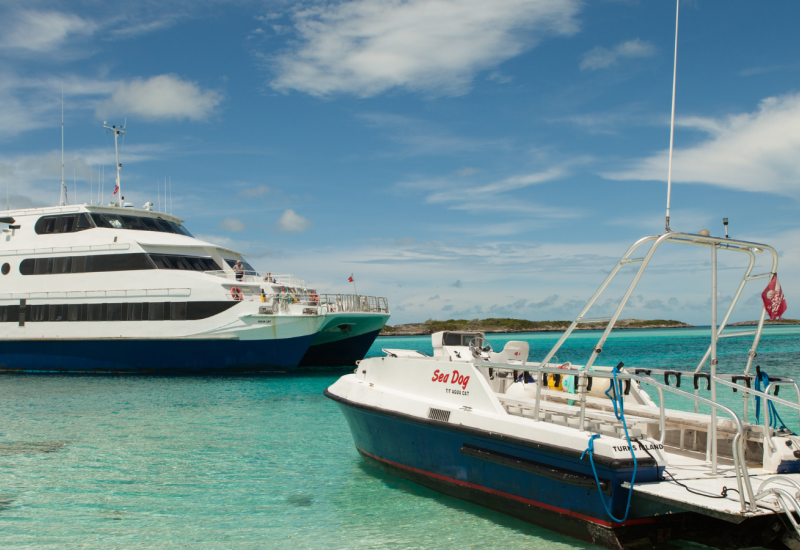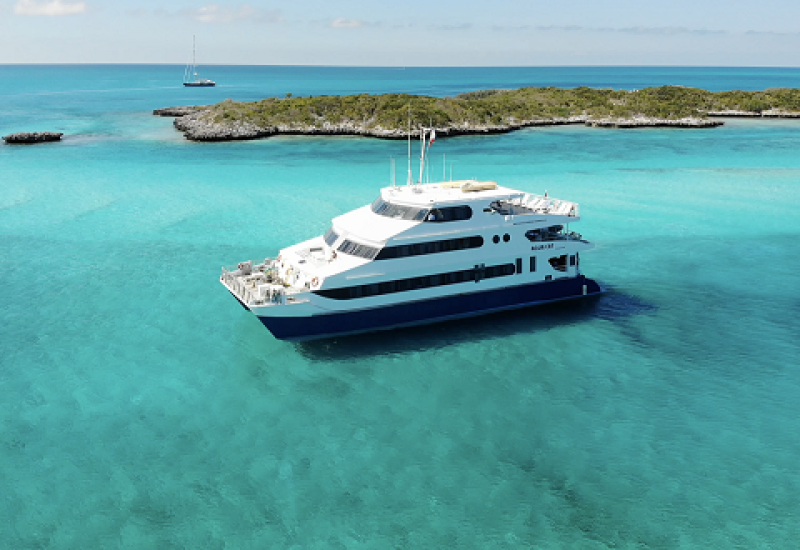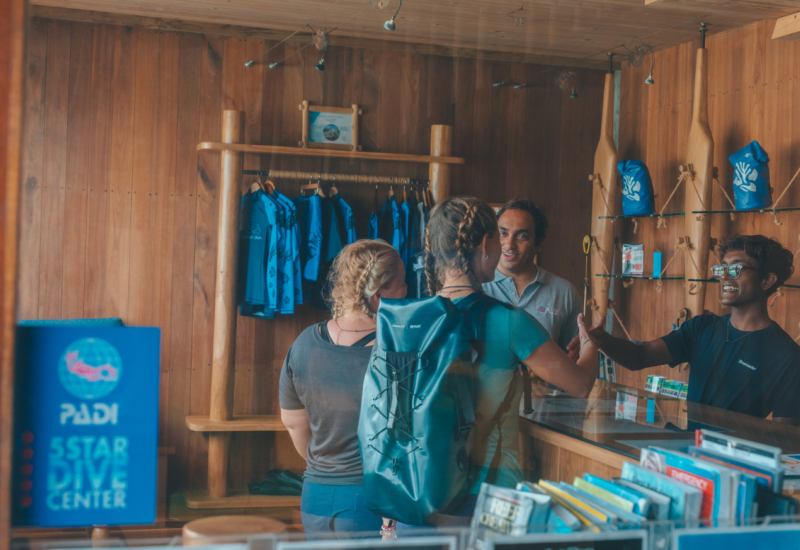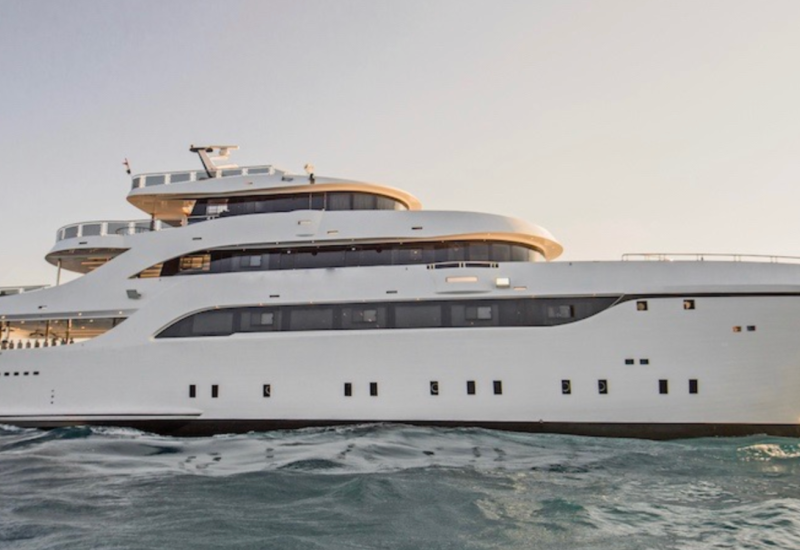From Here to Eternity: Diving the Cayman Islands Aboard Cayman Aggressor IV
**Editor's note:* Aggressor Fleet is celebrating its 30th anniversary in 2014. Go here to learn more about the history of the company — and the celebrities, legendary dive guides and everyday divers who helped make Aggressor history — and read below to find out what a trip aboard Cayman Aggressor IV is like today.
Two-hundred-thousand years is a hell of a surface interval.
That’s more or less how long the Ice Age peaks of the massive Cayman Ridge may have been exposed, as sea levels rose and fell and rose again, eventually birthing prehistoric coral heads along the underwater range that flanks the 20,000-foot-deep Cayman Trench. The process left the Cayman Islands — Grand, Little and Brac — with barely enough land mass to show up against their spectacular sunsets, and gifted them with perhaps the best diving conditions in the Caribbean.
Thirty years is barely an exhale, by comparison. But for a young sport like scuba diving, that counts its entire lifespan in decades, 30 years is a milestone that harks back to another age, when the Cayman Islands’ underwater treasures were just being discovered by the wider world.
The RV of the Sea
In 1984, the first of the Cayman Aggressors — converted from a staff transport used in the Gulf oil fields — had “a sort of epoxy” floors, and only two air-conditioners on the whole ship. “It would blow down the hall, and you’d hope for some cold air” in the cabins, says Wayne Hasson, 65, then captain, manager, chief welder and jack of all tasks on the very first Aggressor. Thirty years later, he’s president of the 16-vessel Aggressor Fleet and Dancer Fleet.
“It was kind of crude, really,” Hasson says of that first boat, but it was an instant hit. “There was nothing else like it. People gravitated to it.”
Compare that with today. Cayman Aggressor IV offers coffee service delivered to your suite each morning, flat-screen high-def TVs in every cabin, and specialty weeks like Solo Traveler, Jim Church School of Underwater Photography and Wine Appreciation, when night dives become dusk dives and four-course dinners include an introduction to a two-varietal tasting, a little something extra for divers revisiting a favorite destination.
Much has changed in 30 years, but one thing has not: The Cayman Islands still boast some of the best diving in the Caribbean.
The islands are known for their spectacular walls, but we start with an entire day of wreck diving. The star of the show is 251-foot Kittiwake, a sleek, upright beauty — perfectly prepared for divers — that somehow seems bigger on the inside than out. Yet I’m surprised to find the nearby reef almost steals the show — fantastical formations draped with sponges and whip corals, pocked with swim-throughs and peek-a-boo windows onto vistas made possible by the Cayman Islands’ startlingly clear waters.
Also on the roster is the Doc Poulson, a jaunty little barge with tons of life waving gaily from every surface, and a wreck-of-a-wreck, the Oro Verde, with a crazy backstory — drug running, mutiny, cement fins — that suits its chaotic condition. On all three wrecks I watch divers running lines and reeling them back in as they criss-cross and circle the ships, weaving in and out of bulkheads where they can, all under the watchful eye of an instructor. Serious business, but it looks like a blast.
Things take a turn for the spooky-cool when we get to Cayman Brac’s Capt. Keith Tibbetts, a 330-foot Russian destroyer torqued in two by Hurricane Ivan. Its midships is smashed to smithereens as if by a mighty hand, and its penetrable bow isn’t for the faint of heart — although it makes a fine proving ground for those divers working on wreck certifications aboard CAIV.
Tons of diving — five a day is the norm on Aggressor Fleet yachts — means many surface intervals. Of 15 divers aboard, one-third were spending that time pursuing certifications from Advanced to Wreck to Nitrox and Underwater Photography.
David Cheever, 45, of Dallas, was working on both Wreck and Underwater Photography, towards completion of his Master Scuba Diver rating. He was full of praise for CAIV instructor Alan Lawlor, 40. “He’s forgotten more about wrecks than I’ll ever know. He was a great instructor,” Cheever says.
That’s echoed by Bill and Sue Miller, retirees from Phoenix who took up scuba about four years ago. Lawlor’s approach, while rigorous, still made it “totally fun,” says Sue, 67. “It gives us more independence,” she adds.
Independence is a hallmark of Aggressor and Dancer Fleet diving, where you are free to strike out with your buddy or dive with staff, as you like. Following staff, at least on the first dive on a site, can be the best way to get to know the neighborhood.
I head out one day with Capt. Lauren Hill, 36, a transplanted New Zealander who’s been CAIV’s captain for just over two years, to a northwest Grand Cayman site called Big Tunnel. It’s one of her favorites.
“The topography is incredible,” she says, “the arches and swim-throughs. It’s near the point, so there’s always current, and lots of life.”
She’s not exaggerating — the current here is the stiffest we encounter all week. But it’s worth it for the natural arches and deep ravines eroded by eons of moving water that sustains life in all its briny forms, most spectacularly several stands of thickly stacked black coral fans, patrolled by friendly turtles. My awe is checked only by the fact that each of the 16 Cayman Islands sites we dive casts its own spell, all with viz so good it borders on the unbelievable.
Eventually we come to those walls, especially impressive off Little Cayman’s famous Bloody Bay. They do not disappoint, with far more fish life than I expect — at times it seems we’re enveloped by fish confetti. A Little Cayman site called Great Wall — “the walliest wall you’ll ever do,” says Capt. Lauren — is so massive it’s visible from space. Not really, but kick out into the blue a bit then look back at its vast, vertical face and you may think so.
A NEW CENTURY
In 1999, Wayne B. Brown was a successful Augusta, Georgia, businessman with teenage children he knew would soon grow up and go their own ways. Looking for activities to share with them, one day he stopped at a local scuba shop and inquired about certification for himself and his then-15-year-old son. Within a few years his daughter was hooked too, and a family passion was born.
Many scuba trips later, the Browns enjoyed an expedition aboard the Galapagos Aggressor. Brown was impressed; a subsequent trip aboard Belize Aggressor confirmed his impressions. Was the company perhaps for sale?
Turned out, it was. Aggressor’s founder and original owner Paul Haines had died, and his children did not want to continue in the business.
“Wayne Brown has been a breath of fresh air,” says Wayne Hasson. “He sees things I didn’t see” in the early years of the fleet’s existence. “He has been hands-on since day one.”
It’s been a boon for Brown, 53, now Aggressor’s CEO and, like Hasson, an avid diver and underwater photographer who visits as much of the fleet each year as time allows. (They read every guest survey, and Hasson investigates any complaints.)
Brown is reluctant to name a favorite among the fleet, but admits if he could choose only one itinerary, it would be Cayman Aggressor IV. His favorite site is one we’ve just dived, Little Cayman’s The Meadows, and it’s easy to see why: It’s one of the most beautiful dives sites imaginable.
A trio of resident Caribbean reef sharks follows us along a plunging wall festooned with tube and barrel sponges of incredible size and color. Visibility seems to go on for miles, allowing you to appreciate the diversity and volume of the fish biomass present here. Fin up over wall’s edge and you’ll discover crystalline plains at about 50 feet, where eagle rays, sting rays and the occasional free-swimming nurse shark go about their business, along with macro finds like nudis the size of a grain of rice on the sandy bottom. Finish up in the shallows in “the maze,” with uber-friendly grouper lolling at your heels, practically wagging their tails. It’s a hugely satisfying site that can be repeated over and over again.
As our week draws too quickly to a close, I ask Brown about the next 30 years. “We try every year to add more service amenities and upgrade the yachts,” he says. “I see us doing that every year, to stay the largest and best fleet out there.”
“We gave it our all, heart and soul, and we loved it,” Hasson says of that first Cayman Aggressor. And they still do: “Service Above Self” is the fleet motto. “I love what I do,” Hasson says. “As long as I’m doing this, I’m happy.”
FIVE REASONS TO DIVE CAYMAN AGGRESSOR IV
Chef Supreme Two words: Kingsley Grant. Guest surveys consistently rate the 37-year-old chef the best in the Aggressor Fleet. You won’t be aboard more than a day before you know why.
Tub Time Do you get cold with repetitive diving? Slip into CAIV’s sun-deck hot tub for a few minutes between dives four and five — position yourself in front of a jet for a lumbar massage.
Viz, viz, viz The Cayman Islands’ porous limestone base and low elevation combine to prevent any runoff to speak of. You’ll enjoy the results on every single dive.
Con Ed Do you get antsy with time on your hands? Fill those surface intervals with a range of instruction from PADI and SSI including Advanced, Nitrox, Wreck Diver, Underwater Photography and more.
It’s a Threefer There’s no other practical way to experience the diving on Grand, Little and Brac in a single week’s vacation. Why choose just one?
NEED TO KNOW
When to Go The Cayman Islands is a year-round dive destination. The rainy season runs June through October.
Diving Conditions Water temps range from the high 70s in winter to the low 80s in summer. Average visibility is 90 feet but can reach virtually to infinity; weather, tides, and spring and fall plankton blooms can affect this.
Operator Aggressor Fleet and Dancer Fleet (aggressor.com) operate the 110-foot steel-hulled Cayman Aggressor IV, which dives all three Cayman Islands, weather permitting, departing from George Town, Grand Cayman.
Price Tag Prices start at $2,595 per person, double occupancy, nitrox not included, for seven-night cruises with five-and-a-half days of diving.
To learn more about the history of The Aggressor Fleet, click here.
**Editor's note:* Aggressor Fleet is celebrated its 30th anniversary in 2014. Go here to learn more about the history of the company — and the celebrities, legendary dive guides and everyday divers who helped make Aggressor history — and read below to find out what a trip aboard Cayman Aggressor IV is like today.
Two-hundred-thousand years is a hell of a surface interval.
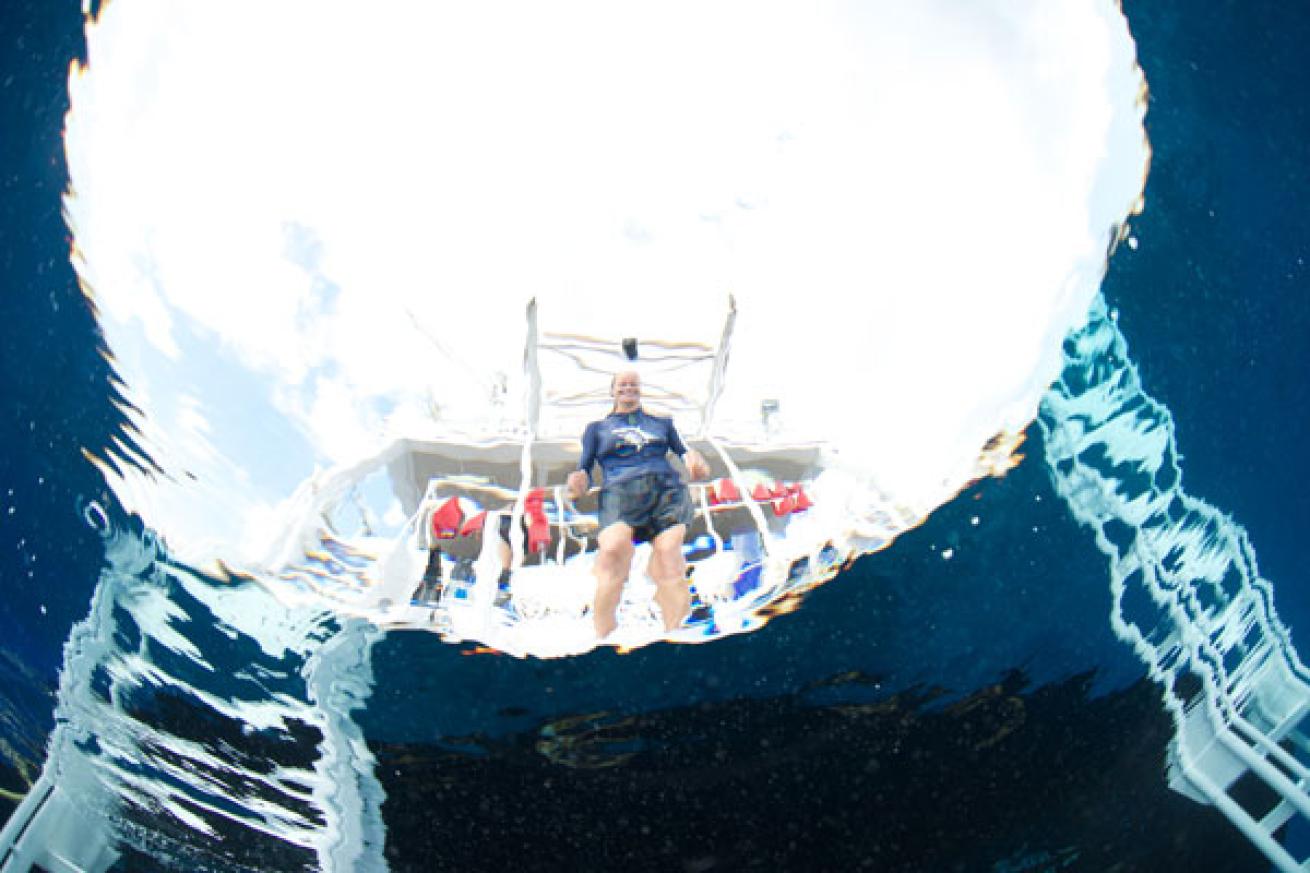
Courtesy Wayne B. Brown/Aggressor.comWaiting for divers, Cayman Aggressor IV
That’s more or less how long the Ice Age peaks of the massive Cayman Ridge may have been exposed, as sea levels rose and fell and rose again, eventually birthing prehistoric coral heads along the underwater range that flanks the 20,000-foot-deep Cayman Trench. The process left the Cayman Islands — Grand, Little and Brac — with barely enough land mass to show up against their spectacular sunsets, and gifted them with perhaps the best diving conditions in the Caribbean.
Thirty years is barely an exhale, by comparison. But for a young sport like scuba diving, that counts its entire lifespan in decades, 30 years is a milestone that harks back to another age, when the Cayman Islands’ underwater treasures were just being discovered by the wider world.
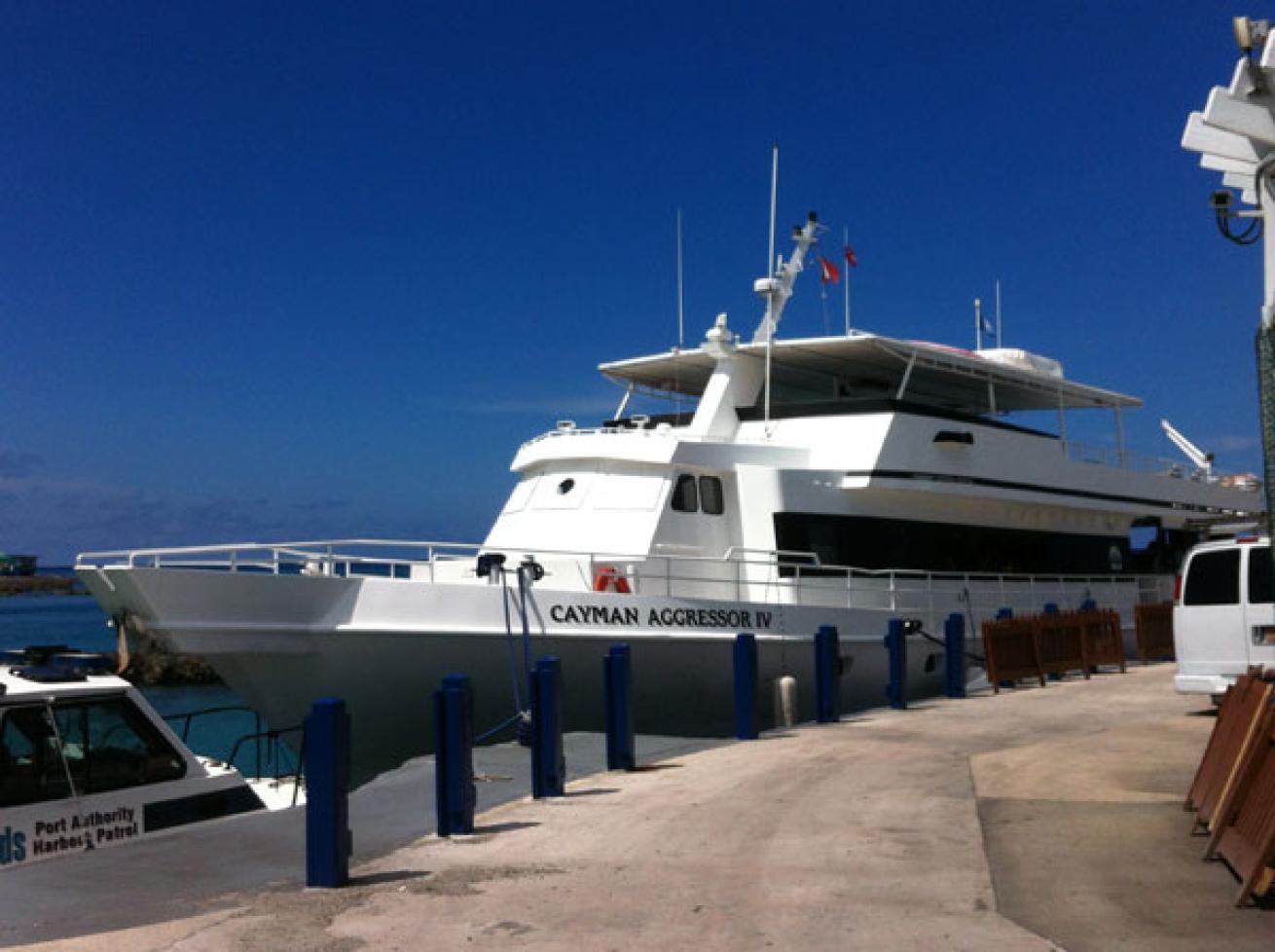
Mary Frances EmmonsCayman Aggressor IV
The RV of the Sea
In 1984, the first of the Cayman Aggressors — converted from a staff transport used in the Gulf oil fields — had “a sort of epoxy” floors, and only two air-conditioners on the whole ship. “It would blow down the hall, and you’d hope for some cold air” in the cabins, says Wayne Hasson, 65, then captain, manager, chief welder and jack of all tasks on the very first Aggressor. Thirty years later, he’s president of the 16-vessel Aggressor Fleet and Dancer Fleet.
“It was kind of crude, really,” Hasson says of that first boat, but it was an instant hit. “There was nothing else like it. People gravitated to it.”
Compare that with today. Cayman Aggressor IV offers coffee service delivered to your suite each morning, flat-screen high-def TVs in every cabin, and specialty weeks like Solo Traveler, Jim Church School of Underwater Photography and Wine Appreciation, when night dives become dusk dives and four-course dinners include an introduction to a two-varietal tasting, a little something extra for divers revisiting a favorite destination.
Much has changed in 30 years, but one thing has not: The Cayman Islands still boast some of the best diving in the Caribbean.
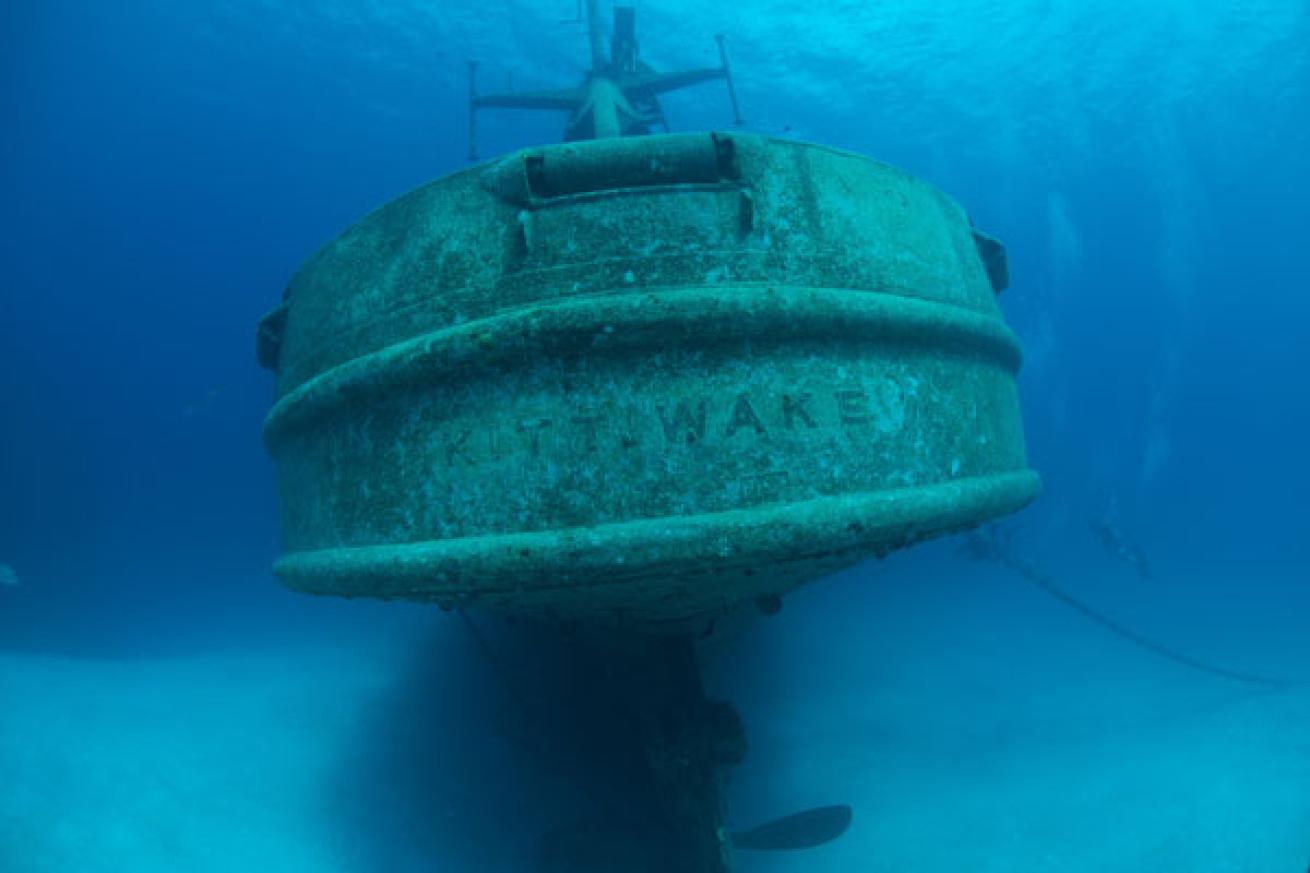
Courtesy Wayne B. Brown/Aggressor.comKittiwake stern, Grand Cayman
The islands are known for their spectacular walls, but we start with an entire day of wreck diving. The star of the show is 251-foot Kittiwake, a sleek, upright beauty — perfectly prepared for divers — that somehow seems bigger on the inside than out. Yet I’m surprised to find the nearby reef almost steals the show — fantastical formations draped with sponges and whip corals, pocked with swim-throughs and peek-a-boo windows onto vistas made possible by the Cayman Islands’ startlingly clear waters.
Also on the roster is the Doc Poulson, a jaunty little barge with tons of life waving gaily from every surface, and a wreck-of-a-wreck, the Oro Verde, with a crazy backstory — drug running, mutiny, cement fins — that suits its chaotic condition. On all three wrecks I watch divers running lines and reeling them back in as they criss-cross and circle the ships, weaving in and out of bulkheads where they can, all under the watchful eye of an instructor. Serious business, but it looks like a blast.
Things take a turn for the spooky-cool when we get to Cayman Brac’s Capt. Keith Tibbetts, a 330-foot Russian destroyer torqued in two by Hurricane Ivan. Its midships is smashed to smithereens as if by a mighty hand, and its penetrable bow isn’t for the faint of heart — although it makes a fine proving ground for those divers working on wreck certifications aboard CAIV.
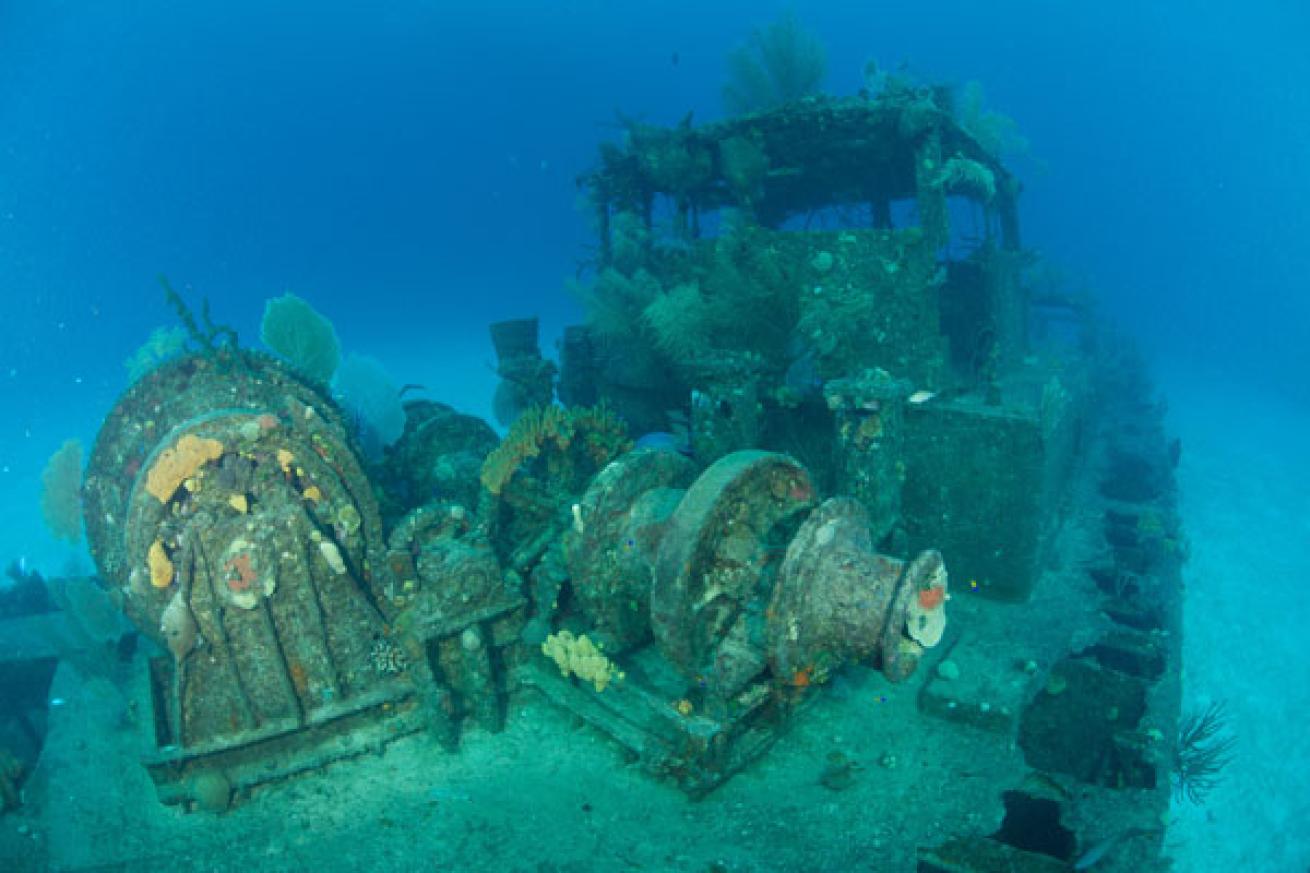
Courtesy Wayne B. Brown/Aggressor.comDoc Poulson wreck, Grand Cayman
Tons of diving — five a day is the norm on Aggressor Fleet yachts — means many surface intervals. Of 15 divers aboard, one-third were spending that time pursuing certifications from Advanced to Wreck to Nitrox and Underwater Photography.
David Cheever, 45, of Dallas, was working on both Wreck and Underwater Photography, towards completion of his Master Scuba Diver rating. He was full of praise for CAIV instructor Alan Lawlor, 40. “He’s forgotten more about wrecks than I’ll ever know. He was a great instructor,” Cheever says.
That’s echoed by Bill and Sue Miller, retirees from Phoenix who took up scuba about four years ago. Lawlor’s approach, while rigorous, still made it “totally fun,” says Sue, 67. “It gives us more independence,” she adds.
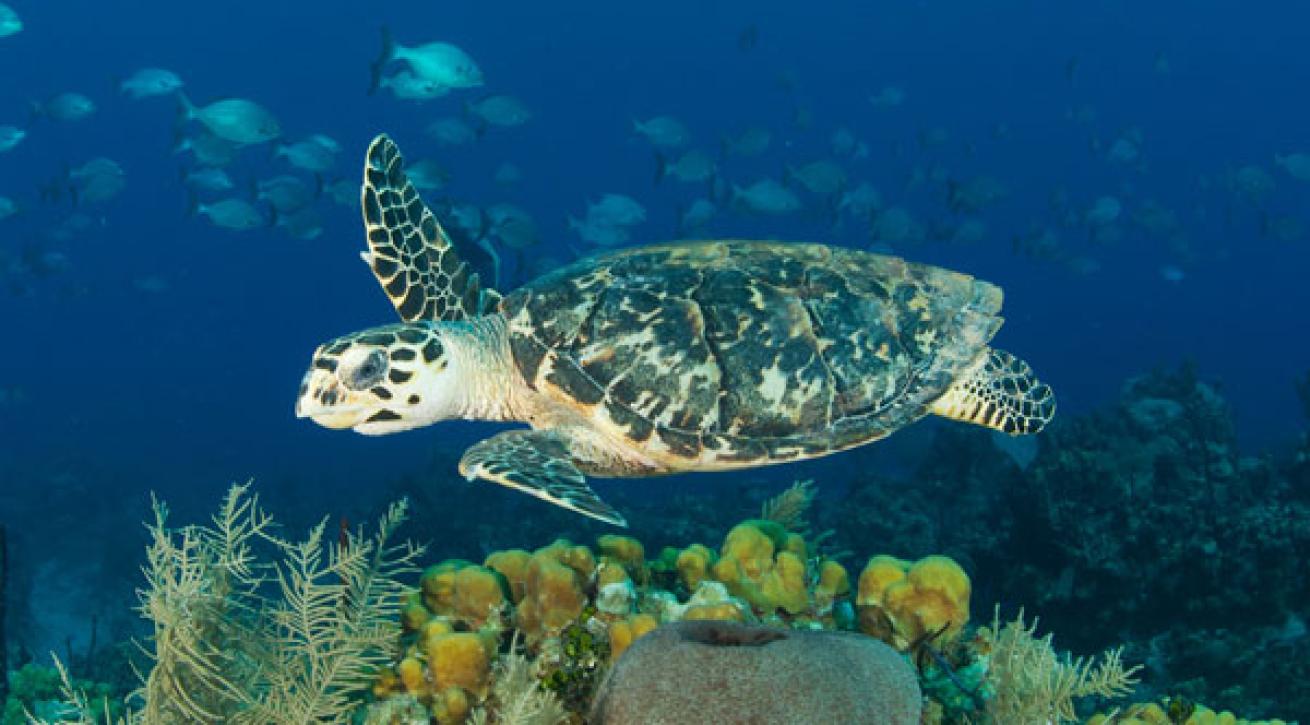
Courtesy Wayne B. Brown/Aggressor.comTurtle, Cayman Islands
Independence is a hallmark of Aggressor and Dancer Fleet diving, where you are free to strike out with your buddy or dive with staff, as you like. Following staff, at least on the first dive on a site, can be the best way to get to know the neighborhood.
I head out one day with Capt. Lauren Hill, 36, a transplanted New Zealander who’s been CAIV’s captain for just over two years, to a northwest Grand Cayman site called Big Tunnel. It’s one of her favorites.
“The topography is incredible,” she says, “the arches and swim-throughs. It’s near the point, so there’s always current, and lots of life.”
She’s not exaggerating — the current here is the stiffest we encounter all week. But it’s worth it for the natural arches and deep ravines eroded by eons of moving water that sustains life in all its briny forms, most spectacularly several stands of thickly stacked black coral fans, patrolled by friendly turtles. My awe is checked only by the fact that each of the 16 Cayman Islands sites we dive casts its own spell, all with viz so good it borders on the unbelievable.
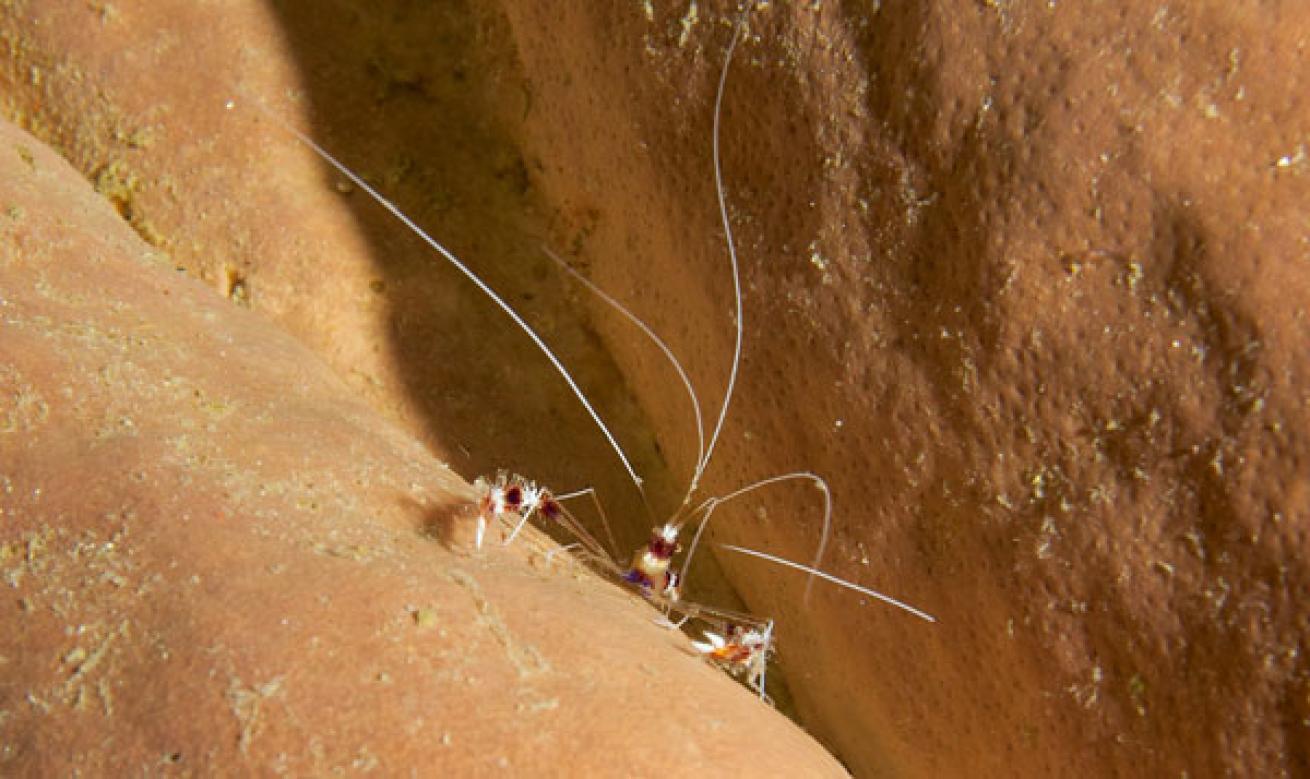
Courtesy Wayne B. Brown/Aggressor.comShrimp, Cayman Islands
Eventually, we come to those walls, especially impressive off Little Cayman’s famous Bloody Bay. They do not disappoint, with far more fish life than I expect — at times it seems we’re enveloped by fish confetti. A Little Cayman site called Great Wall — “the walliest wall you’ll ever do,” says Capt. Lauren — is so massive it’s visible from space. Not really, but kick out into the blue a bit then look back at its vast, vertical face and you may think so.
A NEW CENTURY
In 1999, Wayne B. Brown was a successful Augusta, Georgia, businessman with teenage children he knew would soon grow up and go their own ways. Looking for activities to share with them, one day he stopped at a local scuba shop and inquired about certification for himself and his then-15-year-old son. Within a few years his daughter was hooked too, and a family passion was born.
Many scuba trips later, the Browns enjoyed an expedition aboard the Galapagos Aggressor. Brown was impressed; a subsequent trip aboard Belize Aggressor confirmed his impressions. Was the company perhaps for sale?
Turned out, it was. Aggressor’s founder and original owner Paul Haines had died, and his children did not want to continue in the business.
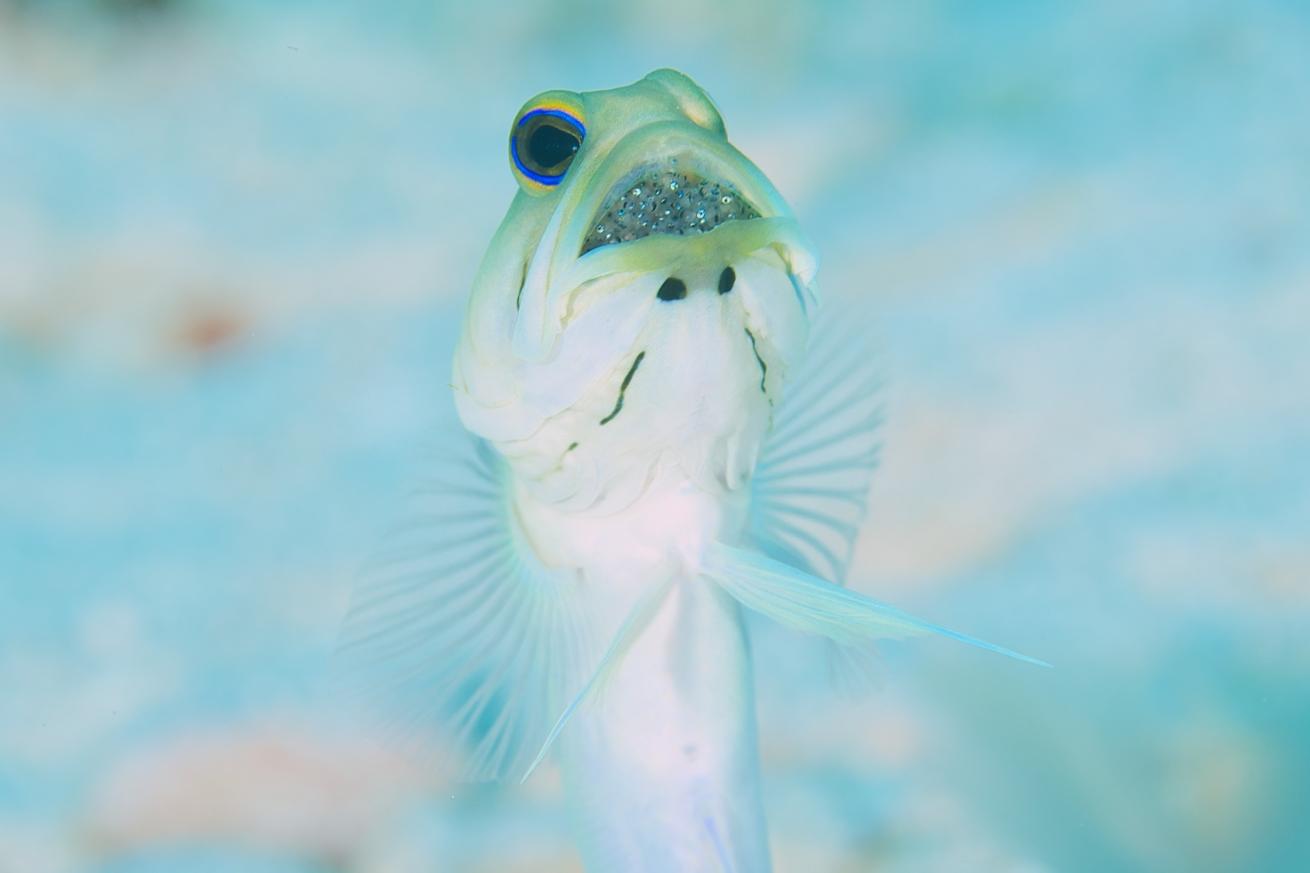
Courtesy Wayne B. Brown/Aggressor.comJawfish with eggs, Little Cayman
“Wayne Brown has been a breath of fresh air,” says Wayne Hasson. “He sees things I didn’t see” in the early years of the fleet’s existence. “He has been hands-on since day one.”
It’s been a boon for Brown, 53, now Aggressor’s CEO and, like Hasson, an avid diver and underwater photographer who visits as much of the fleet each year as time allows. (They read every guest survey, and Hasson investigates any complaints.)
Brown is reluctant to name a favorite among the fleet, but admits if he could choose only one itinerary, it would be Cayman Aggressor IV. His favorite site is one we’ve just dived, Little Cayman’s The Meadows, and it’s easy to see why: It’s one of the most beautiful dives sites imaginable.
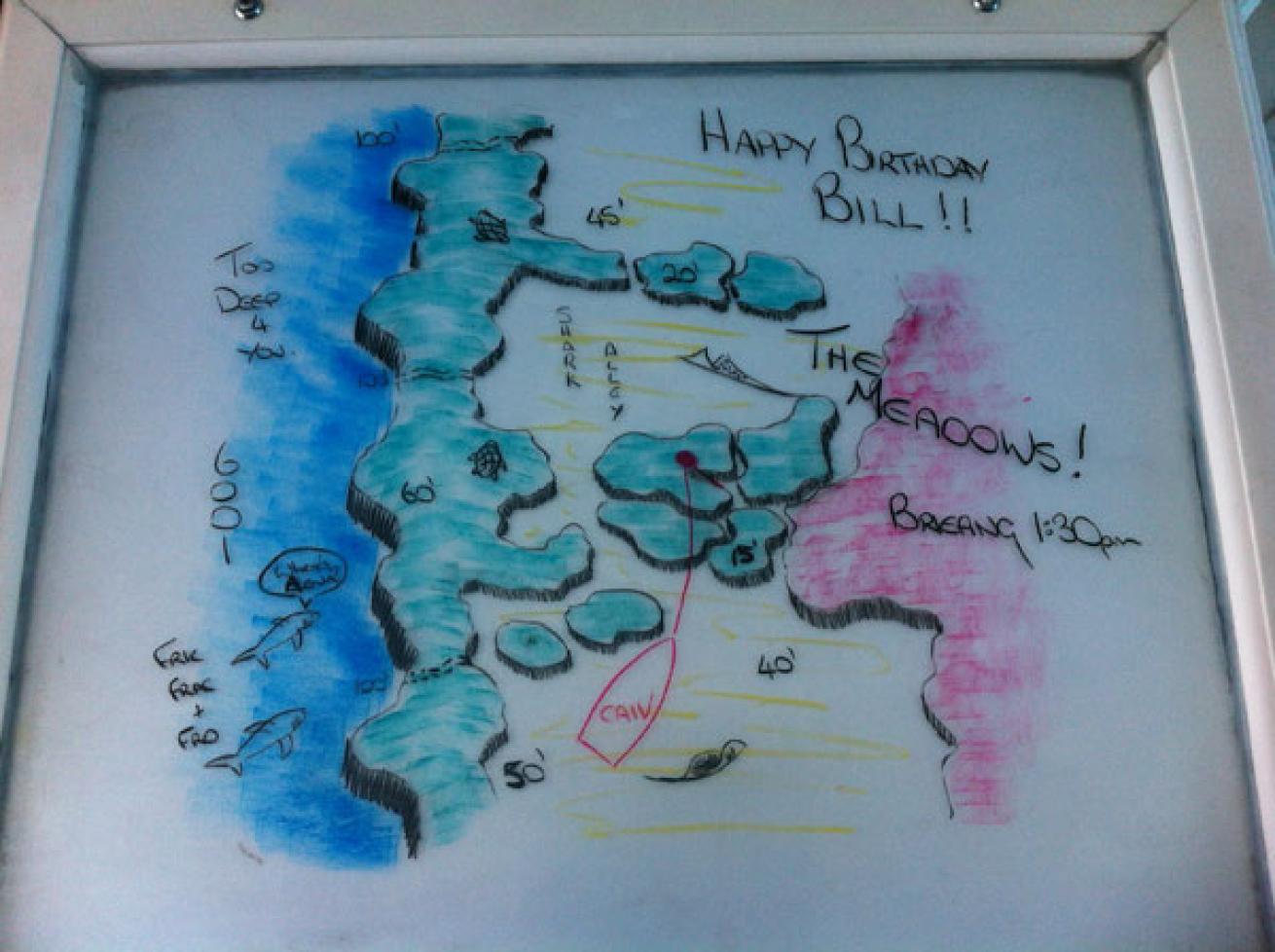
Mary Frances EmmonsDive map, Little Cayman's The Meadows
A trio of resident Caribbean reef sharks follows us along a plunging wall festooned with tube and barrel sponges of incredible size and color. Visibility seems to go on for miles, allowing you to appreciate the diversity and volume of the fish biomass present here. Fin up over wall’s edge and you’ll discover crystalline plains at about 50 feet, where eagle rays, sting rays and the occasional free-swimming nurse shark go about their business, along with macro finds like nudis the size of a grain of rice on the sandy bottom. Finish up in the shallows in “the maze,” with uber-friendly grouper lolling at your heels, practically wagging their tails. It’s a hugely satisfying site that can be repeated over and over again.
As our week draws too quickly to a close, I ask Brown about the next 30 years. “We try every year to add more service amenities and upgrade the yachts,” he says. “I see us doing that every year, to stay the largest and best fleet out there.”
“We gave it our all, heart and soul, and we loved it,” Hasson says of that first Cayman Aggressor. And they still do: “Service Above Self” is the fleet motto. “I love what I do,” Hasson says. “As long as I’m doing this, I’m happy.”
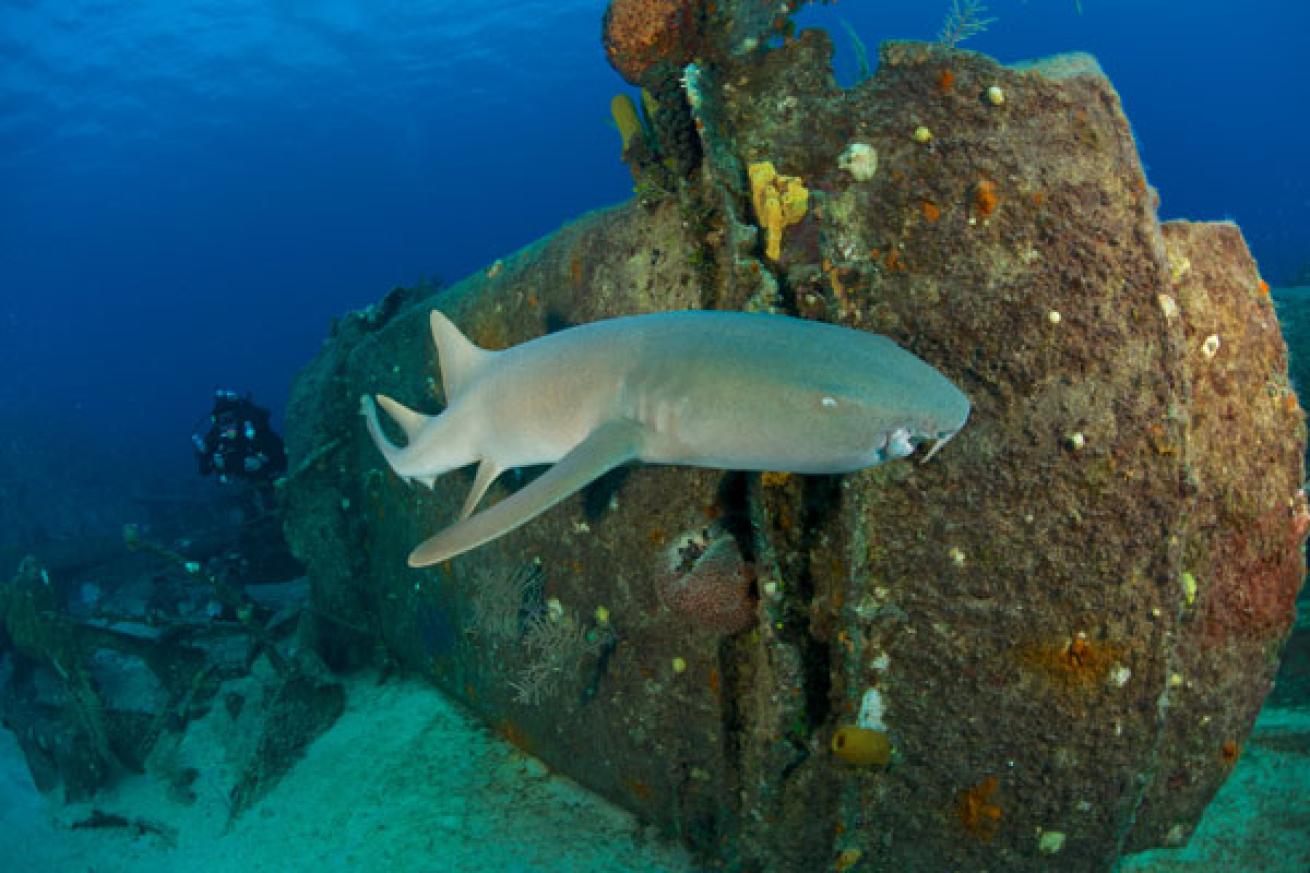
Courtesy Wayne B. Brown/Aggressor.comFinn, the friendly nurse shark
FIVE REASONS TO DIVE CAYMAN AGGRESSOR IV
Chef Supreme Two words: Kingsley Grant. Guest surveys consistently rate the 37-year-old chef the best in the Aggressor Fleet. You won’t be aboard more than a day before you know why.
Tub Time Do you get cold with repetitive diving? Slip into CAIV’s sun-deck hot tub for a few minutes between dives four and five — position yourself in front of a jet for a lumbar massage.
Viz, viz, viz The Cayman Islands’ porous limestone base and low elevation combine to prevent any runoff to speak of. You’ll enjoy the results on every single dive.
Con Ed Do you get antsy with time on your hands? Fill those surface intervals with a range of instruction from PADI and SSI including Advanced, Nitrox, Wreck Diver, Underwater Photography and more.
It’s a Threefer There’s no other practical way to experience the diving on Grand, Little and Brac in a single week’s vacation. Why choose just one?
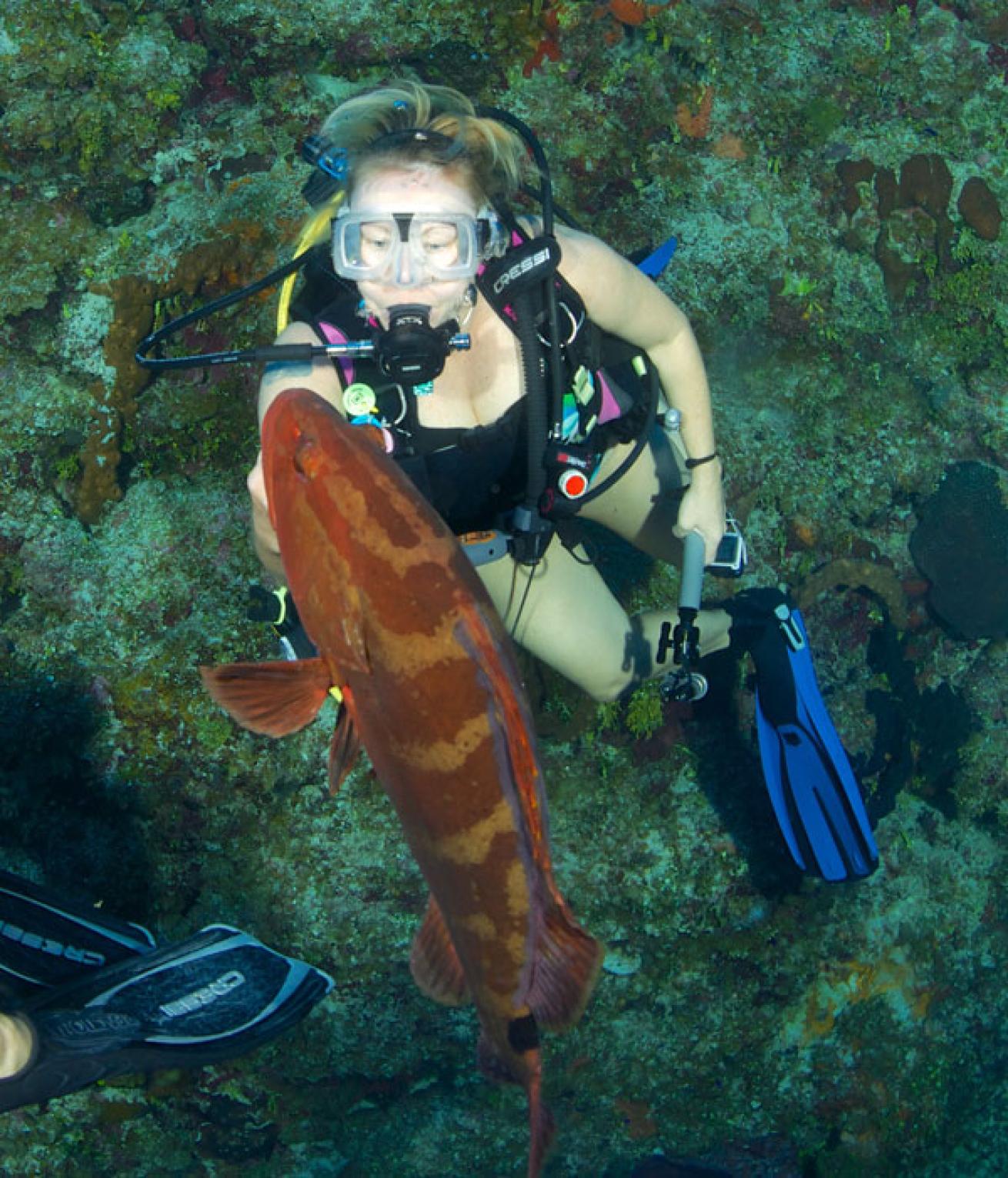
Courtesy Wayne B. Brown/Aggressor.comFriendly grouper, Little Cayman
NEED TO KNOW
When to Go The Cayman Islands is a year-round dive destination. The rainy season runs June through October.
Diving Conditions Water temps range from the high 70s in winter to the low 80s in summer. Average visibility is 90 feet but can reach virtually to infinity; weather, tides, and spring and fall plankton blooms can affect this.
Operator Aggressor Fleet and Dancer Fleet (aggressor.com) operate the 110-foot steel-hulled Cayman Aggressor IV, which dives all three Cayman Islands, weather permitting, departing from George Town, Grand Cayman.
Price Tag Prices start at $2,595 per person, double occupancy, nitrox not included, for seven-night cruises with five-and-a-half days of diving.
To learn more about the history of The Aggressor Fleet, click here.
More Photos from the Trip Below:
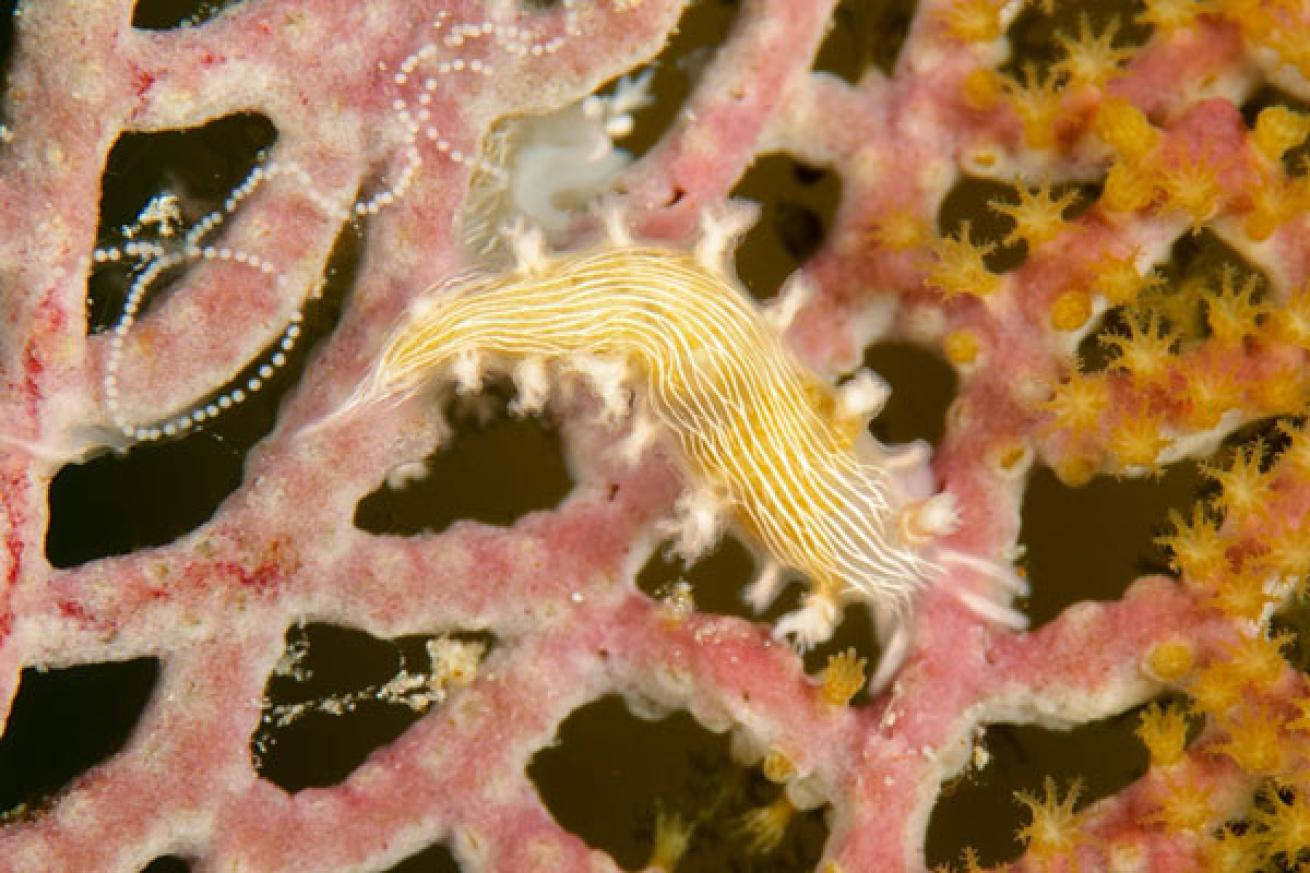
Courtesy Wayne B. Brown/Aggressor.comCayman Islands nudibranch
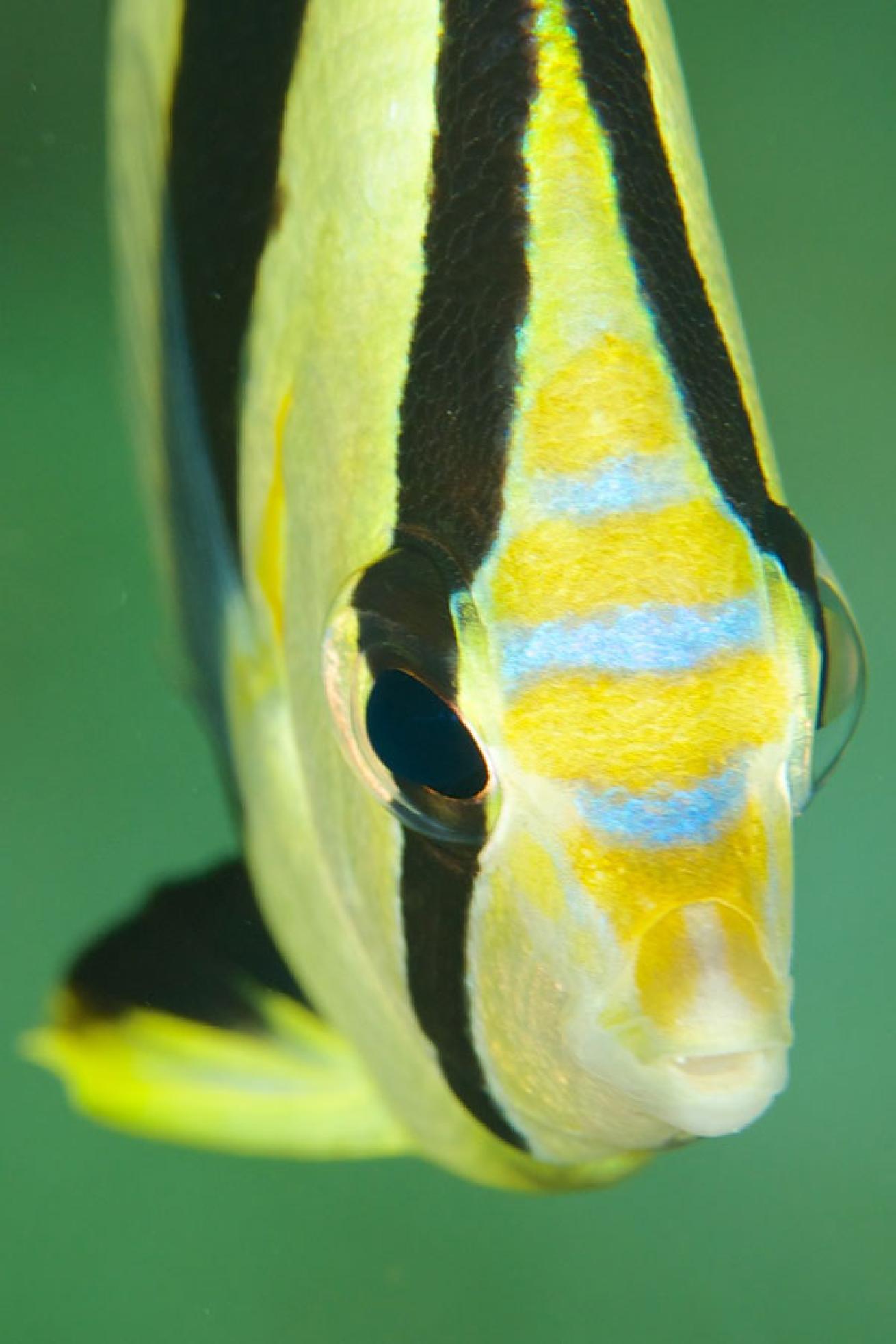
Courtesy Wayne B. Brown/Aggressor.comReef beauty
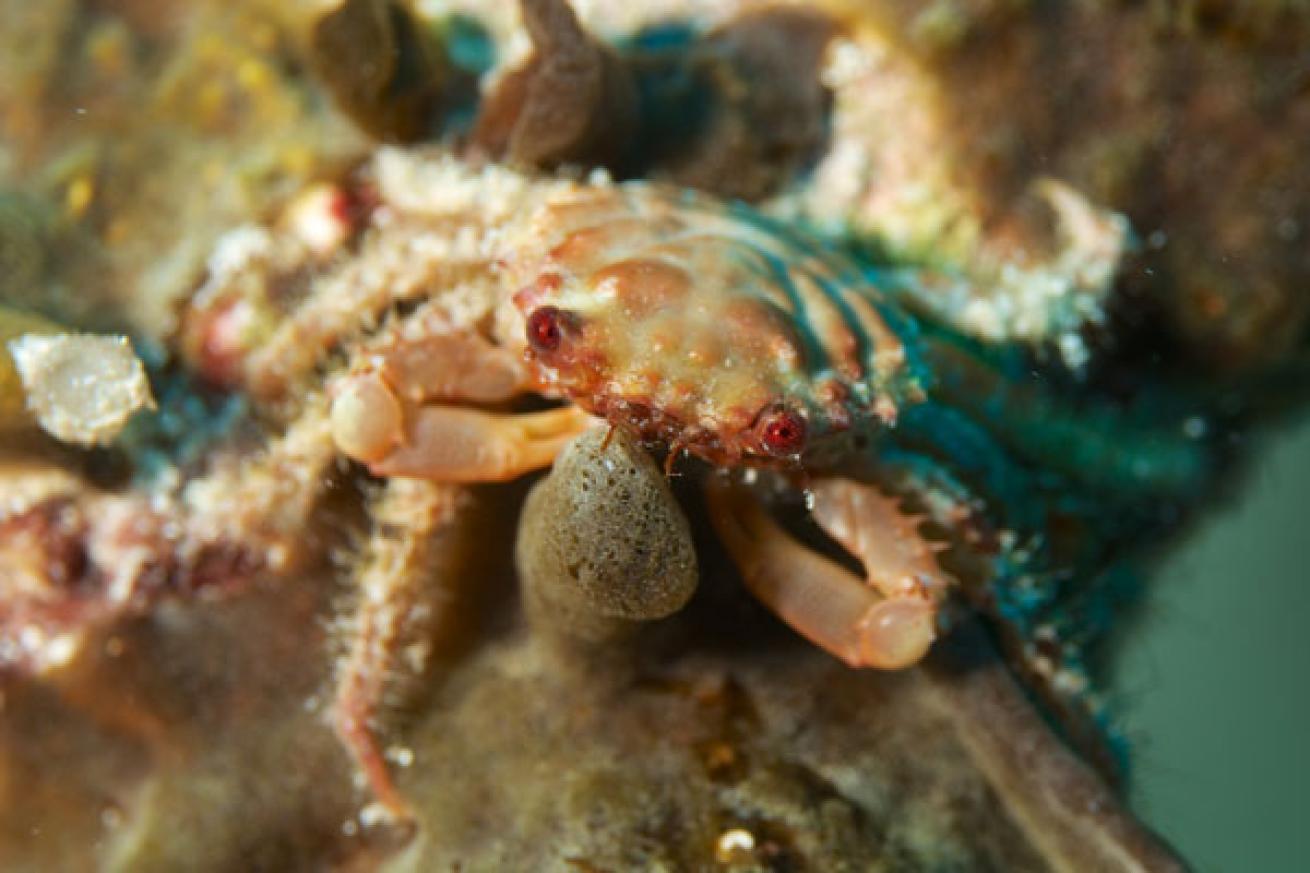
Courtesy Wayne B. Brown/Aggressor.comCrab, Cayman Islands
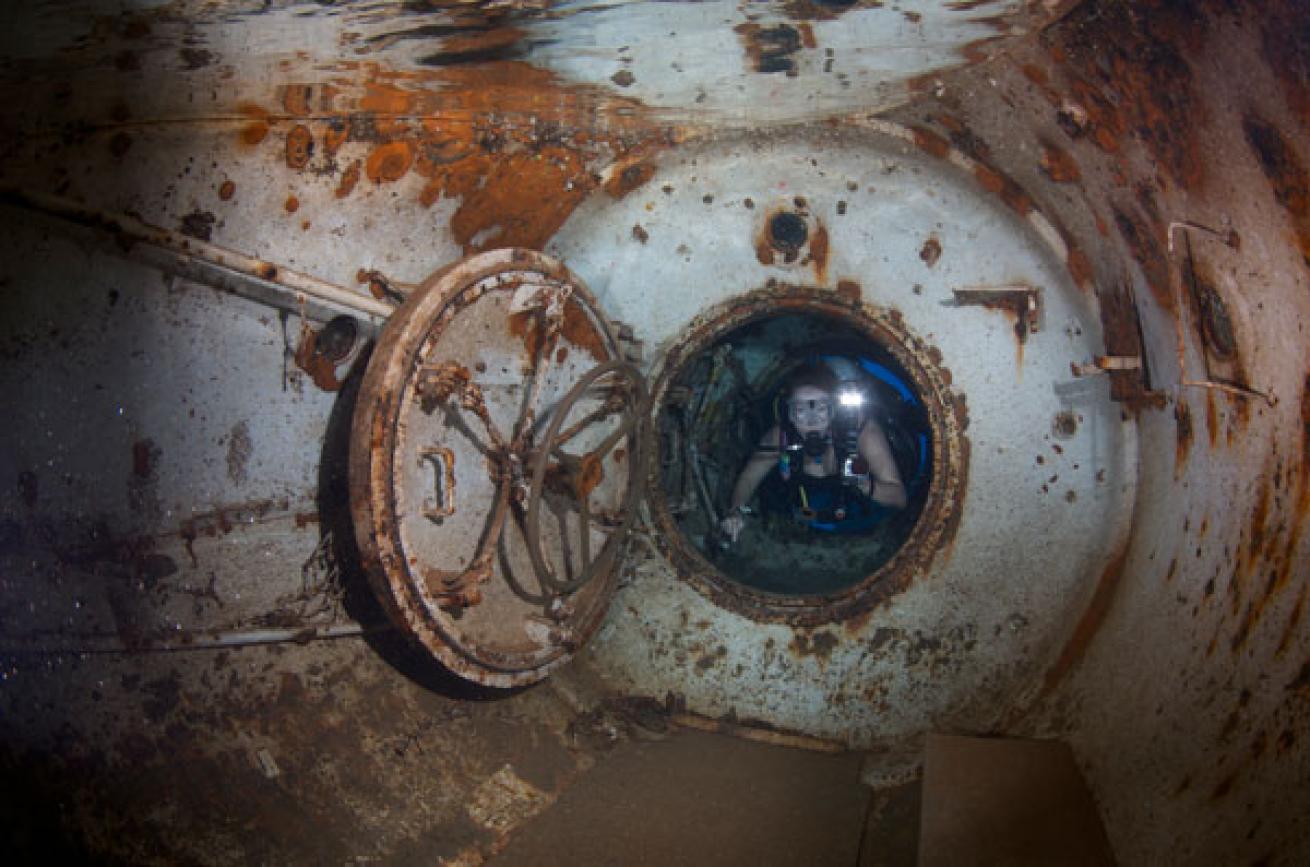
Courtesy Aggressor.comHyperbaric chamber, Kittiwake
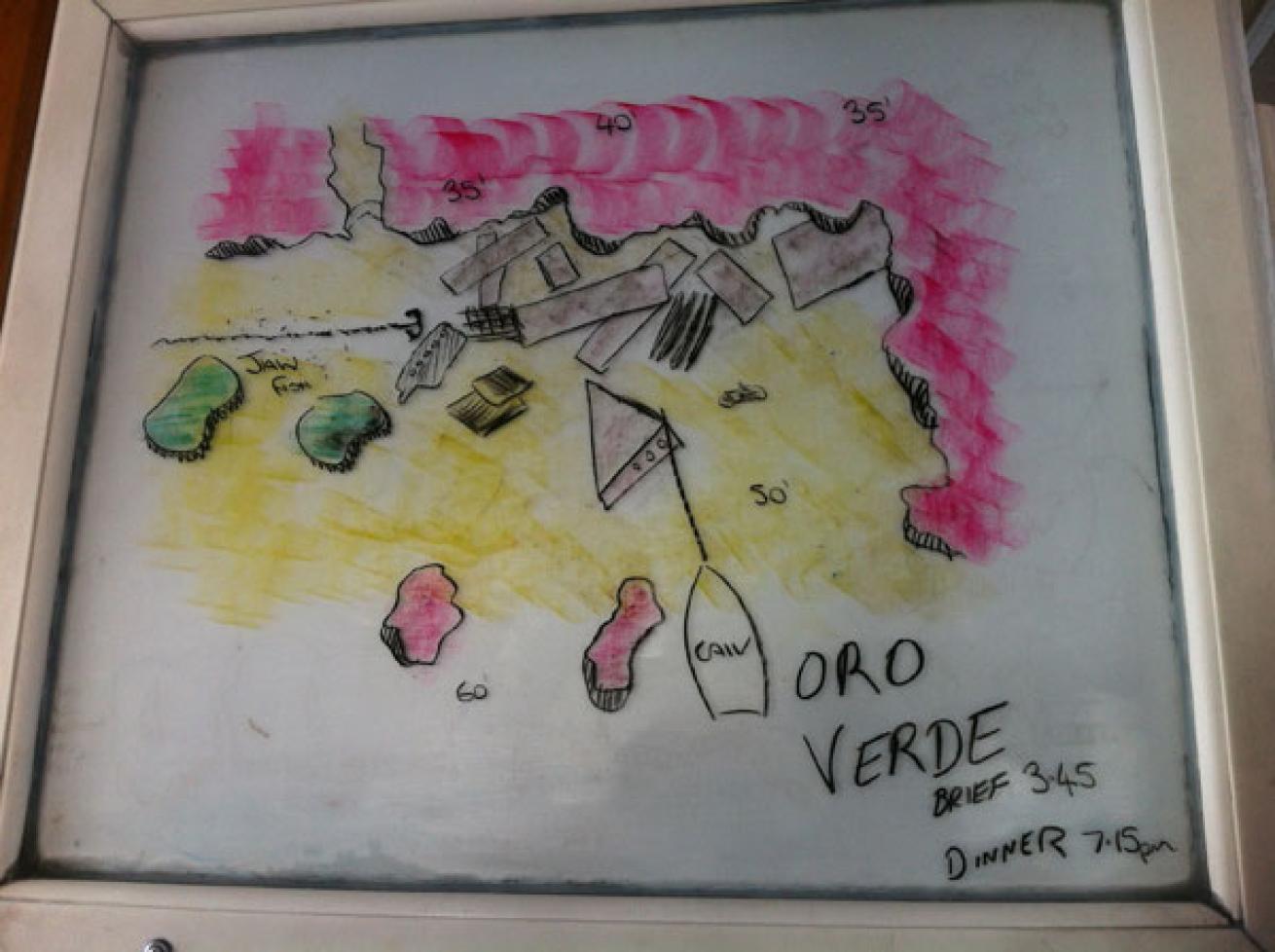
Mary Frances EmmonsOro Verde dive briefing
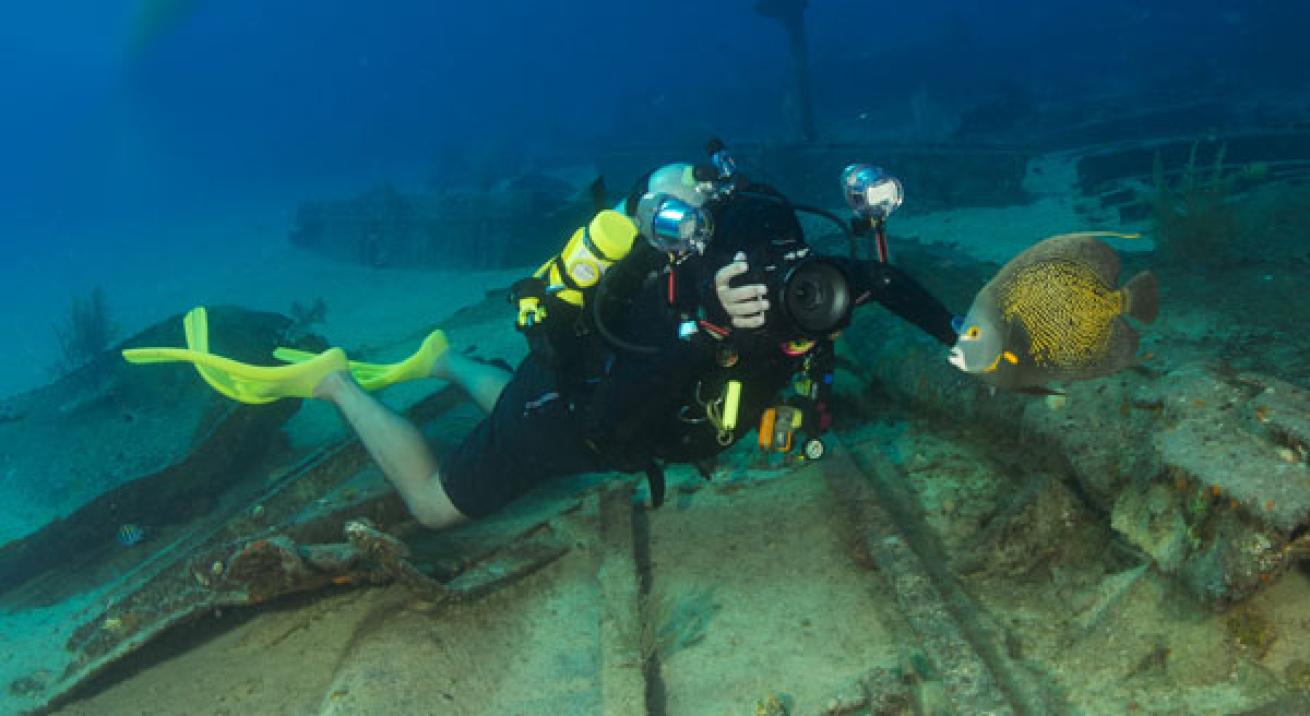
Courtesy Wayne B. Brown/Aggressor.comOro Verde dusk dive
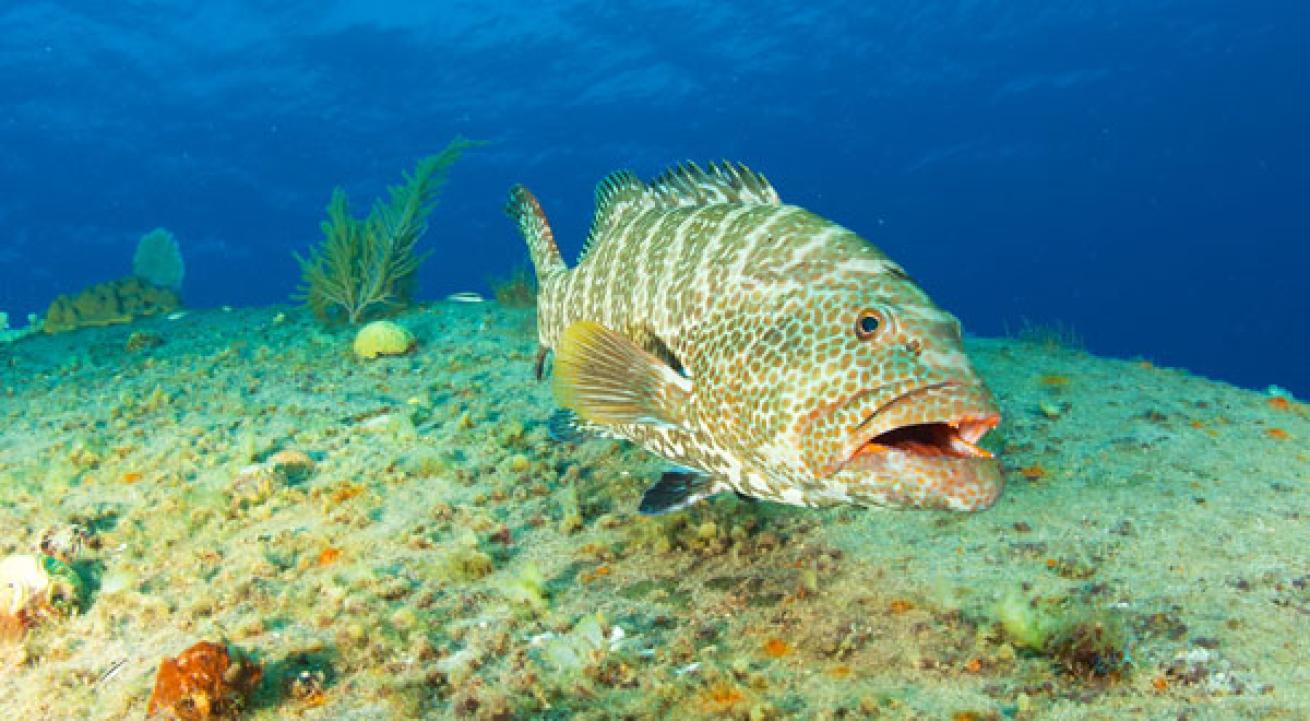
Courtesy Wayne B. Brown/Aggressor.comGrouper, Cayman Islands
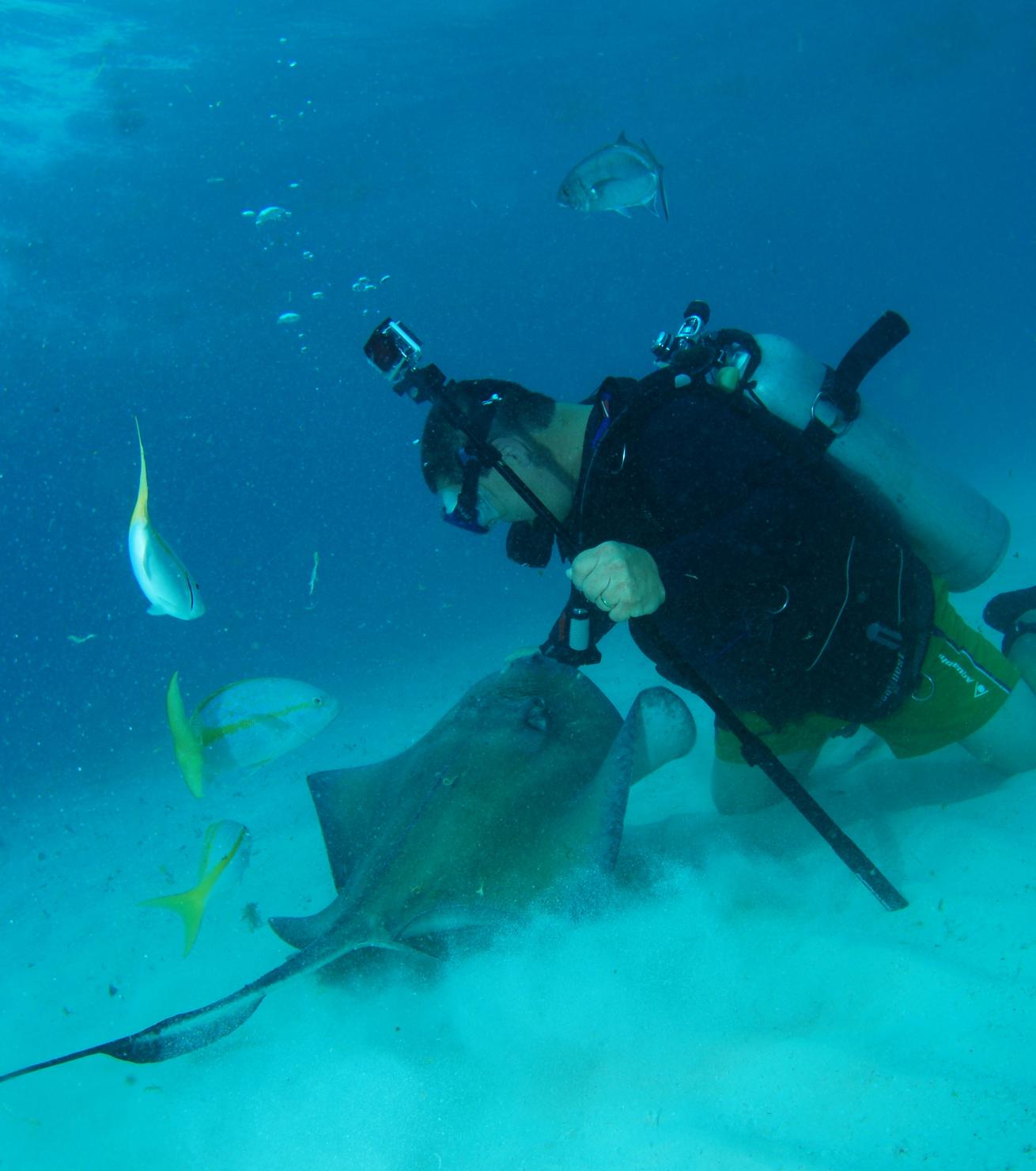
Courtesy Aggressor.comStingray City, Grand Cayman
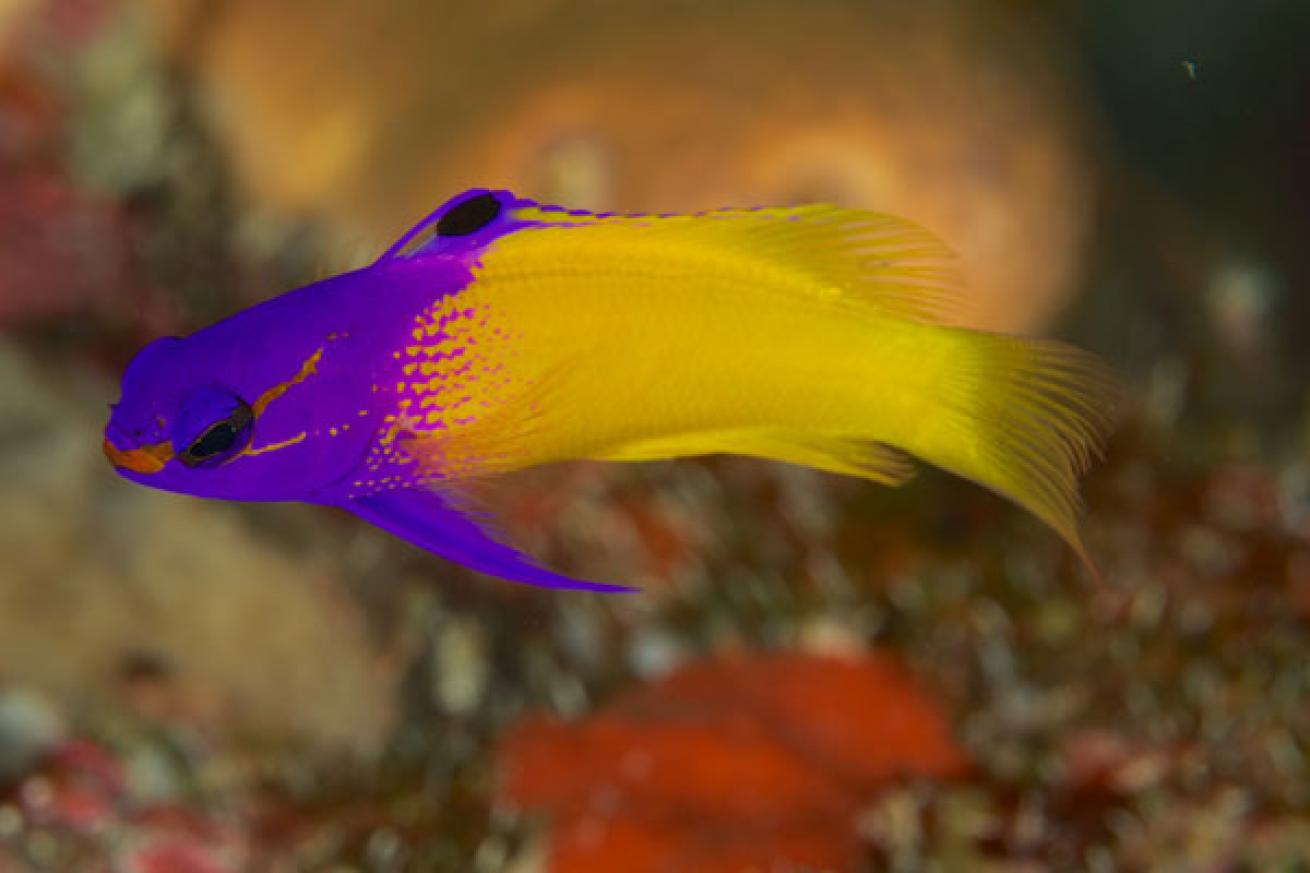
Courtesy Wayne B. Brown/Aggressor.comFairy basslet, Cayman Islands
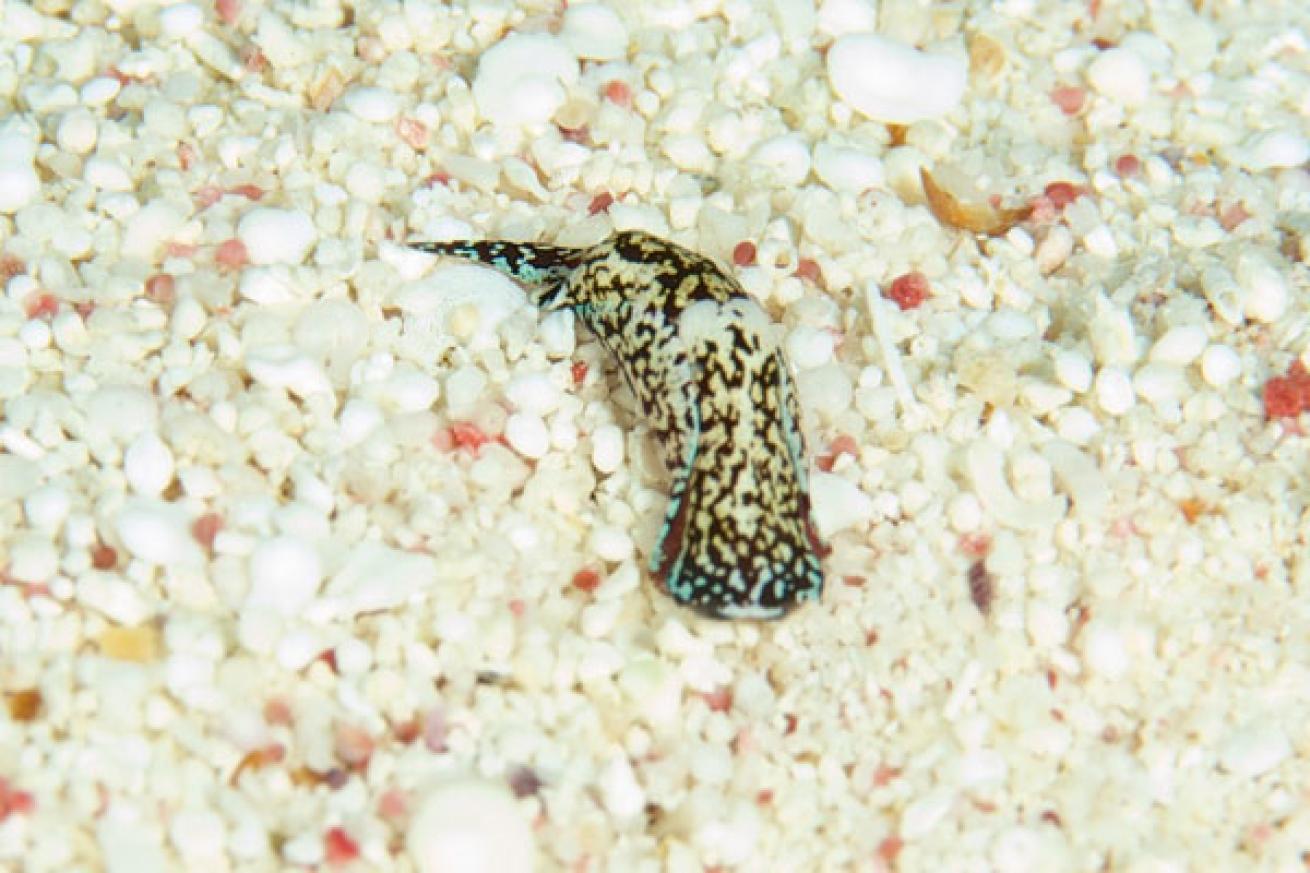
Courtesy Wayne B. Brown/Aggressor.comNudibranch, Little Cayman
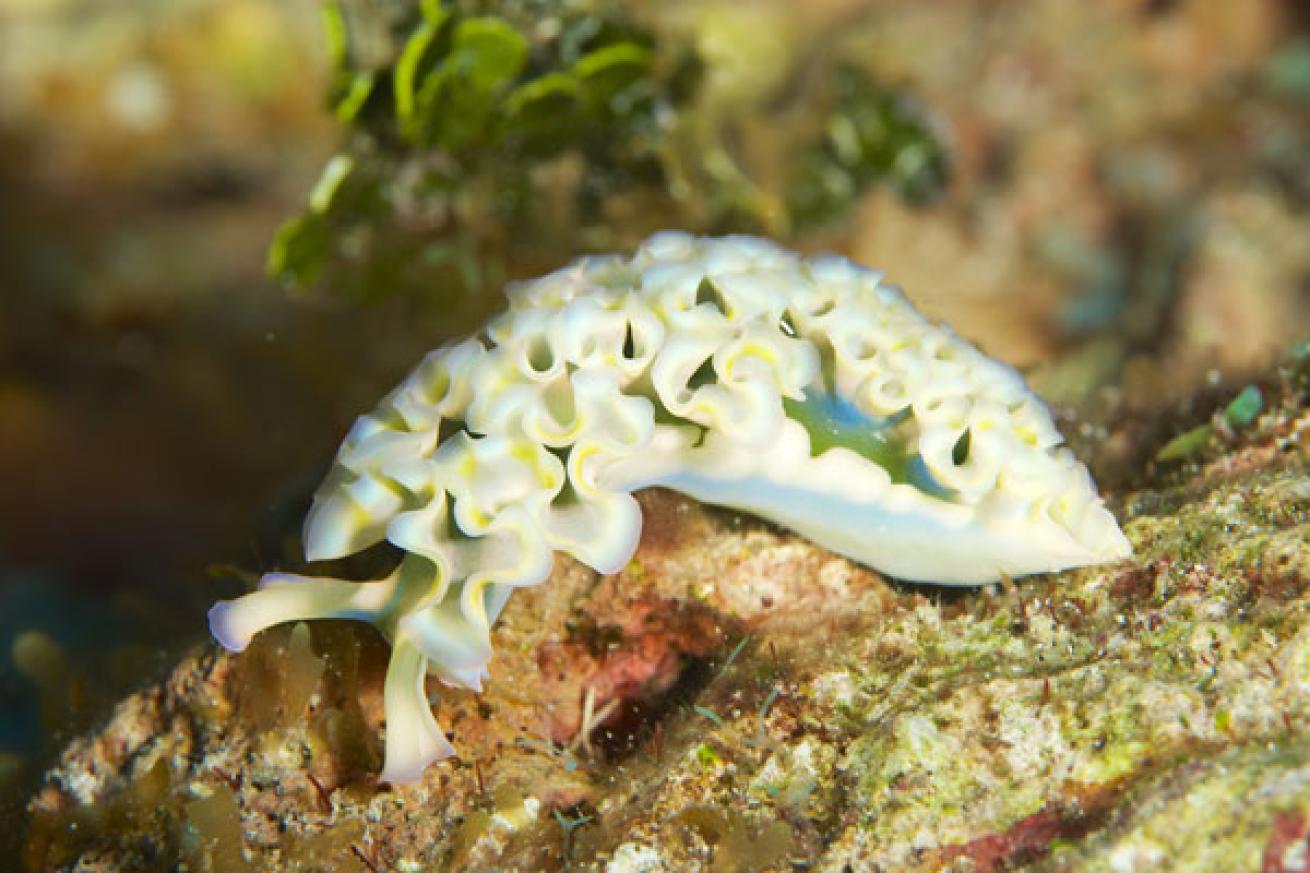
Courtesy Wayne B. Brown/Aggressor.comLettuce leaf slug, Cayman Islands
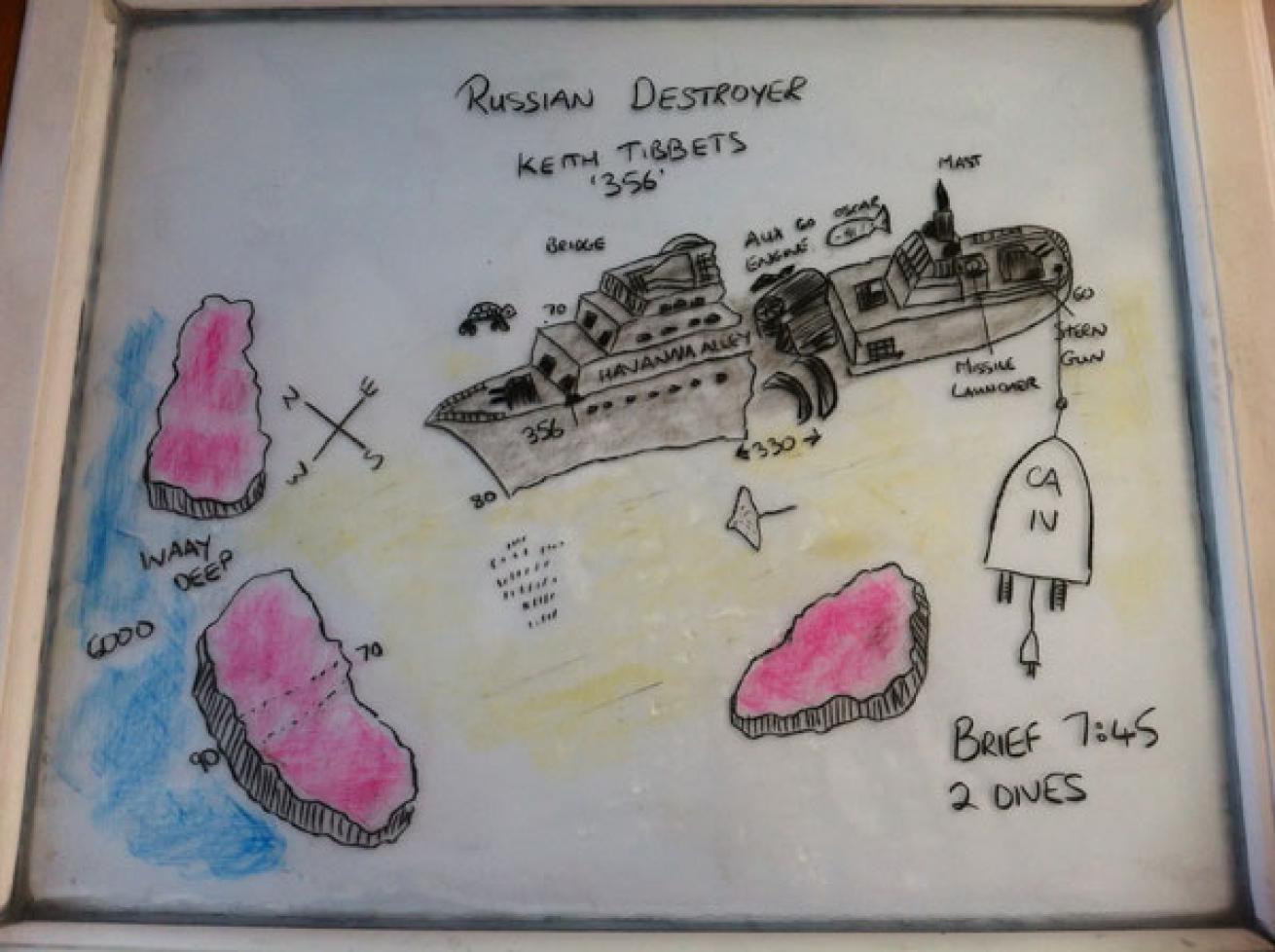
Mary Frances EmmonsDive site map of MV Capt. Keith Tibbetts, Cayman Brac
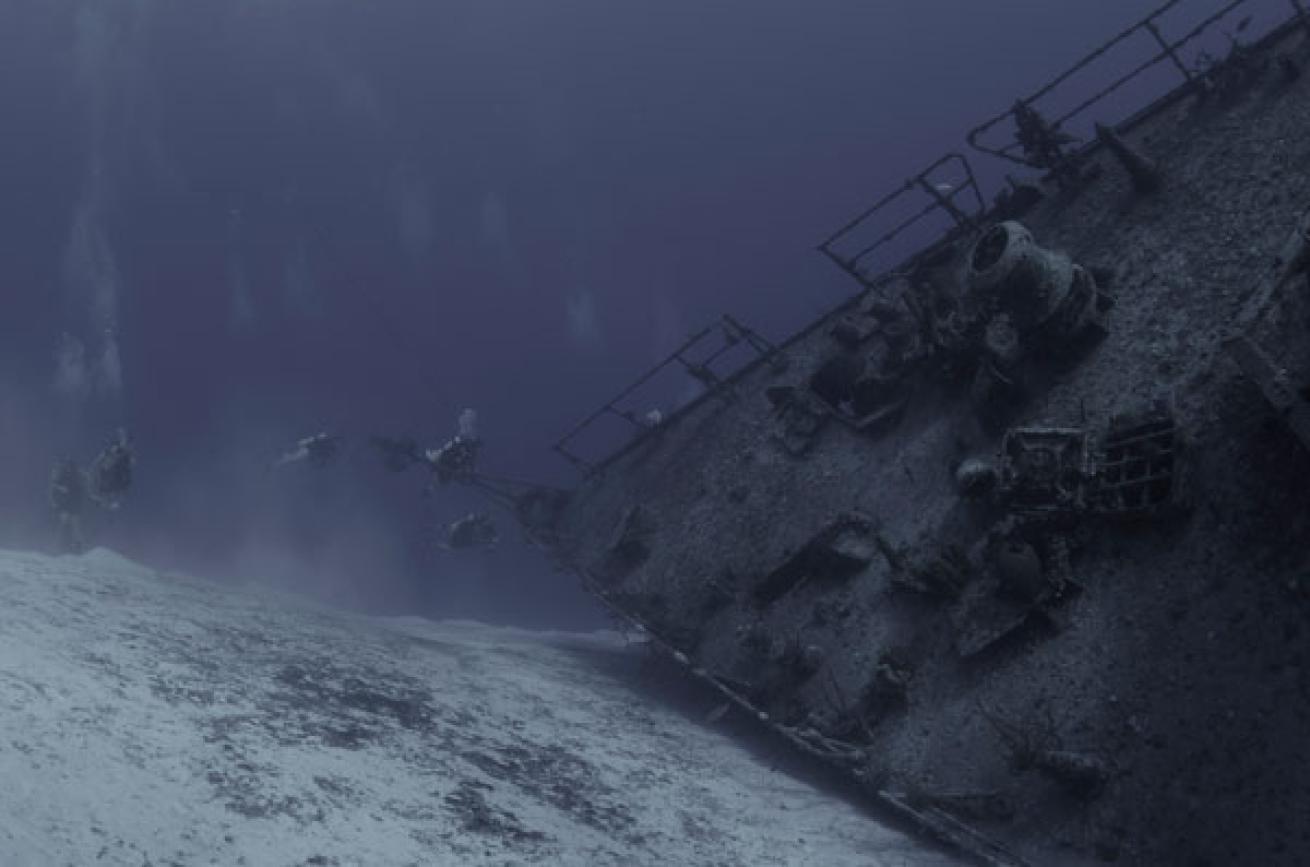
Courtesy Aggressor.comMV Capt. Keith Tibbetts, Cayman Brac
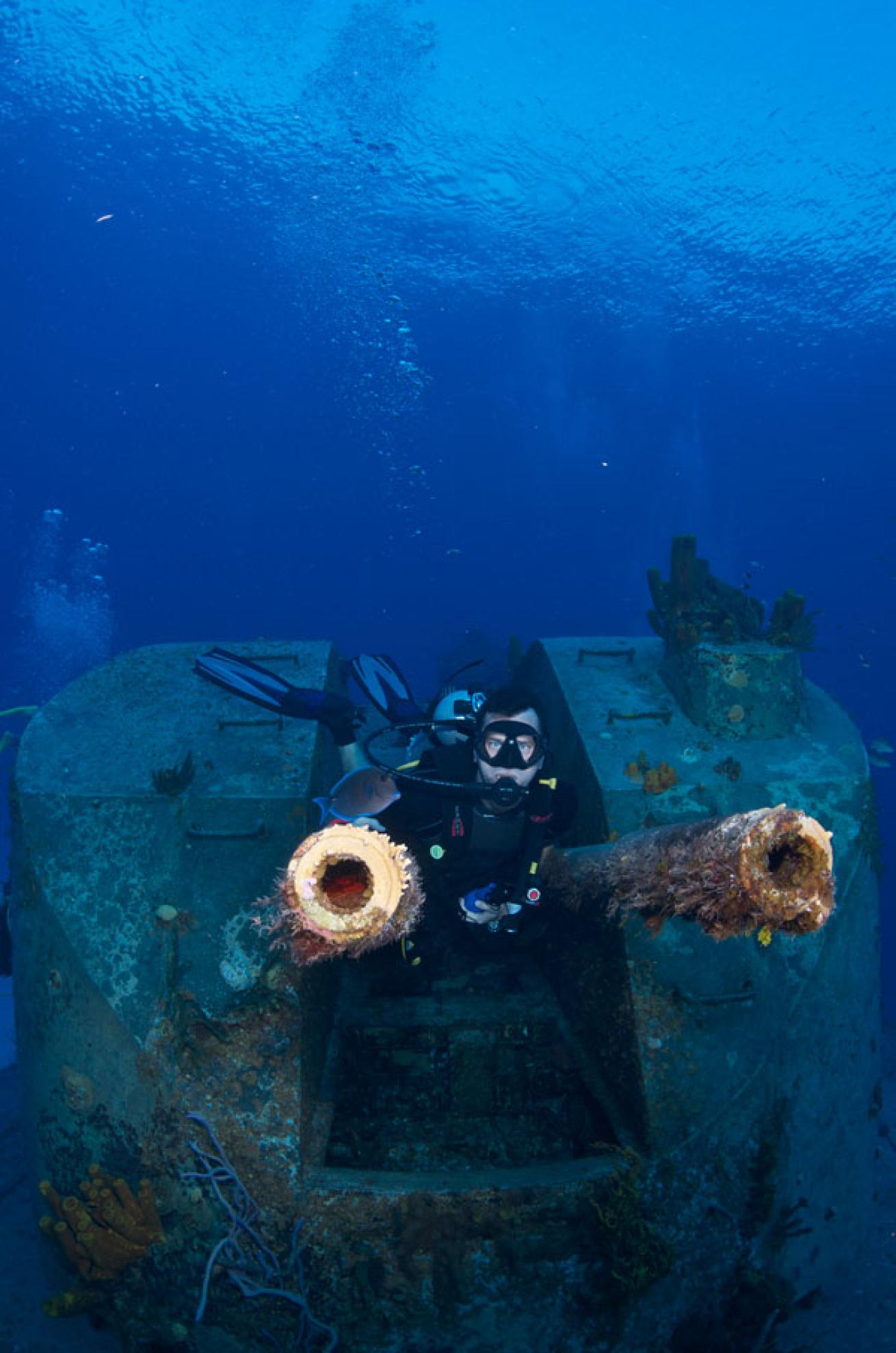
Courtesy Aggressor.comStern guns, MV Capt. Keith Tibbetts, Cayman Brac
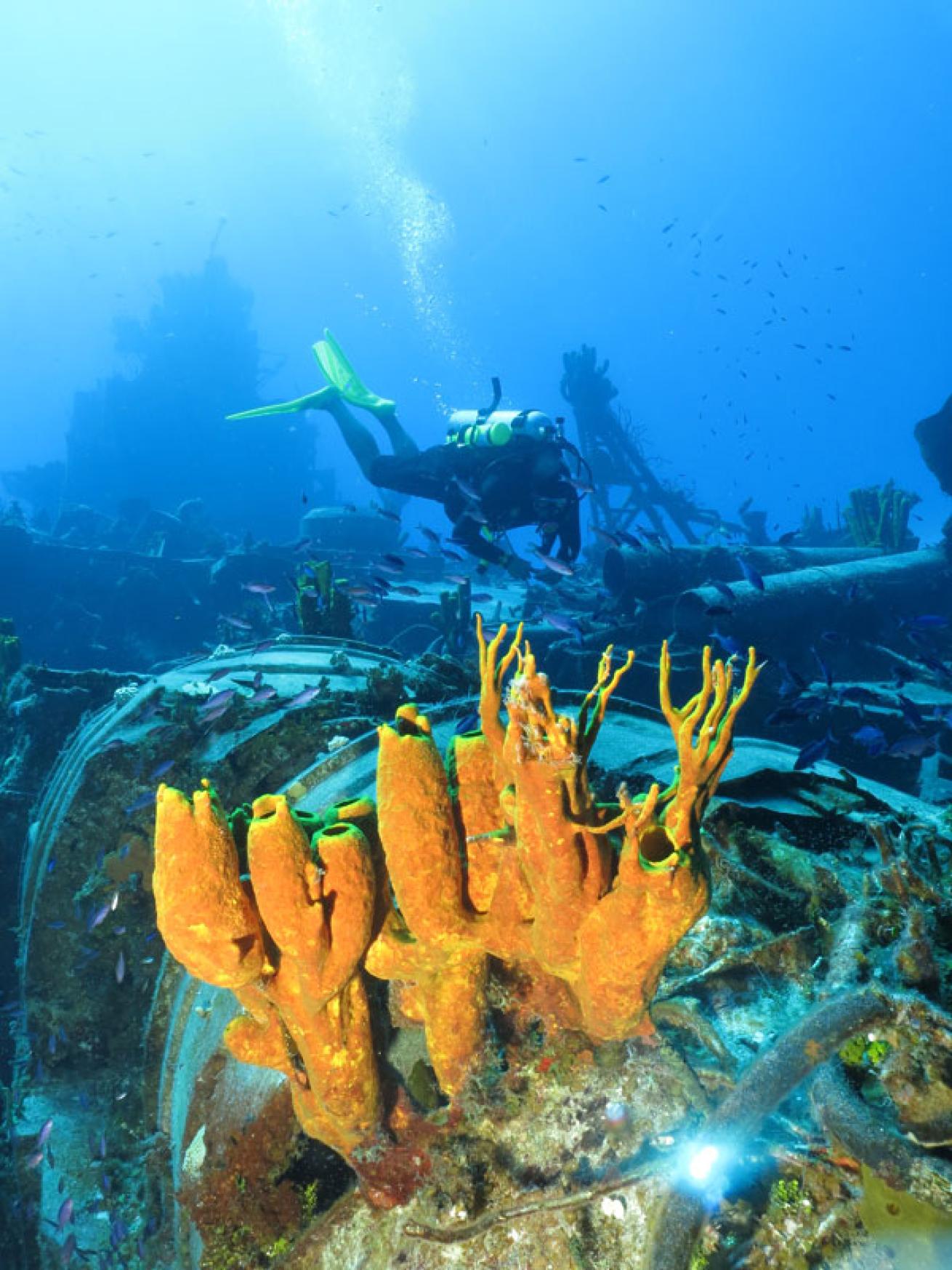
Courtesy Aggressor.comMV Capt. Keith Tibbetts, Cayman Brac
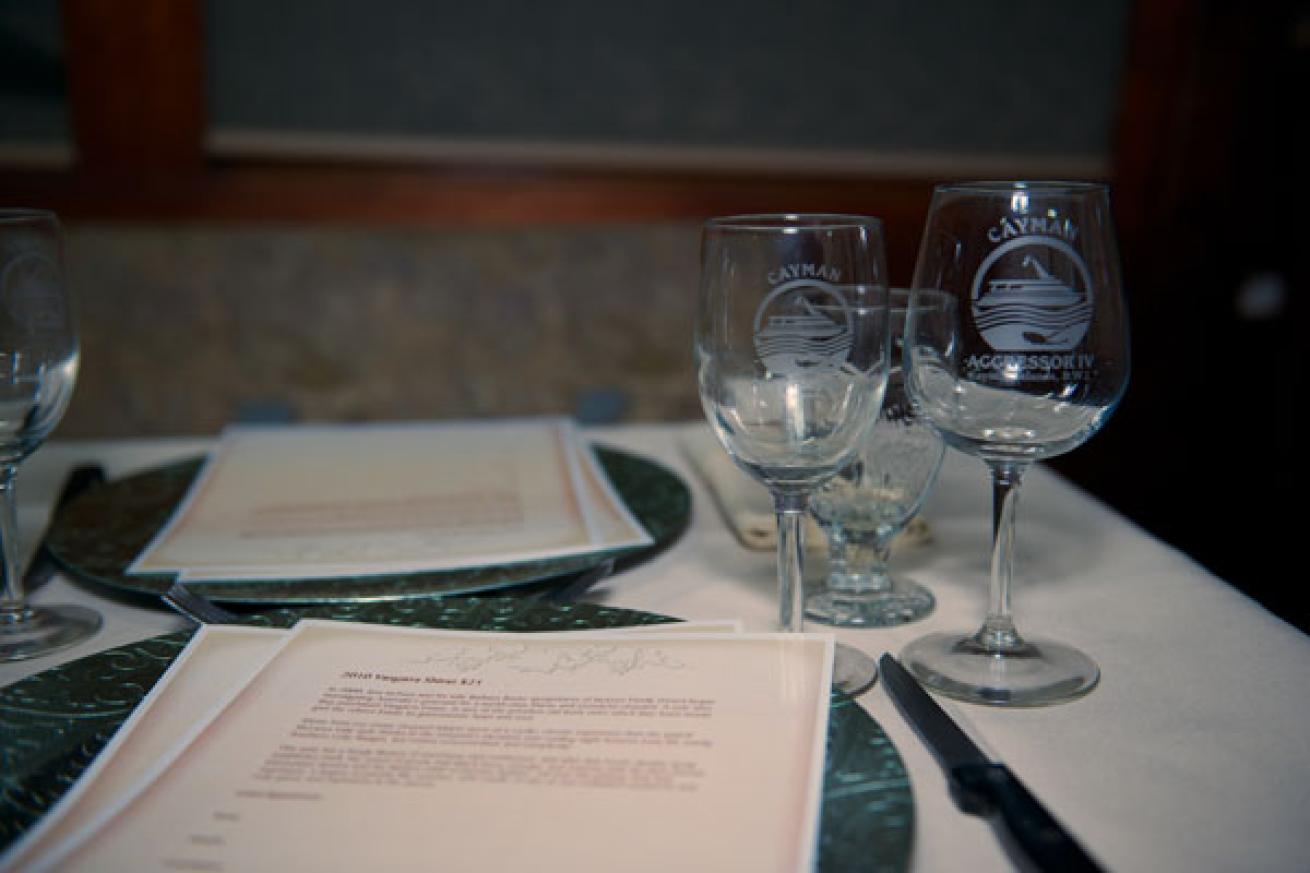
Courtesy Wayne B. Brown/Aggressor.comWine Appreciation Week, Cayman Aggressor IV
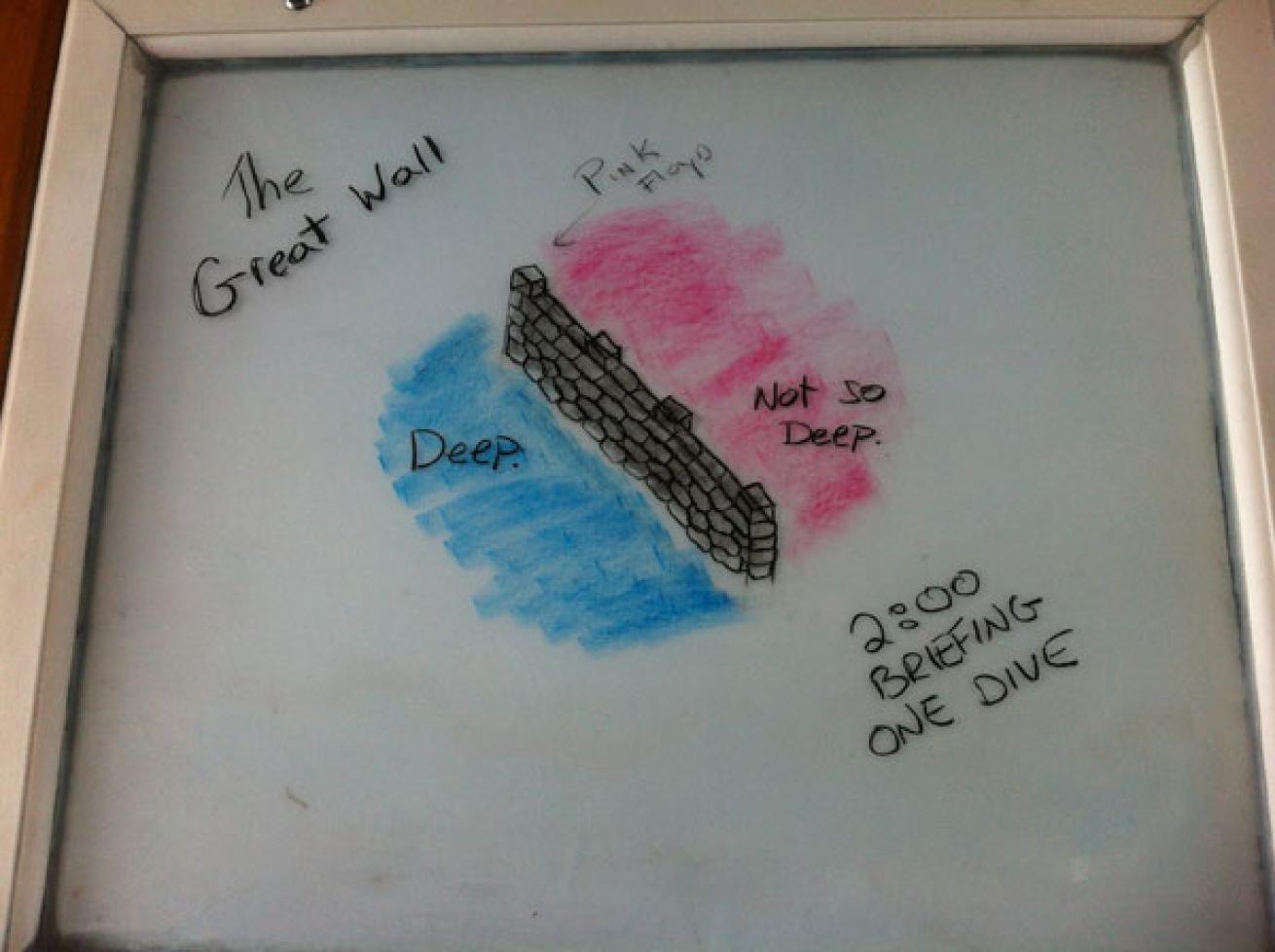
Mary Frances EmmonsOptions at The Great Wall dive site. Deep. Not So Deep.
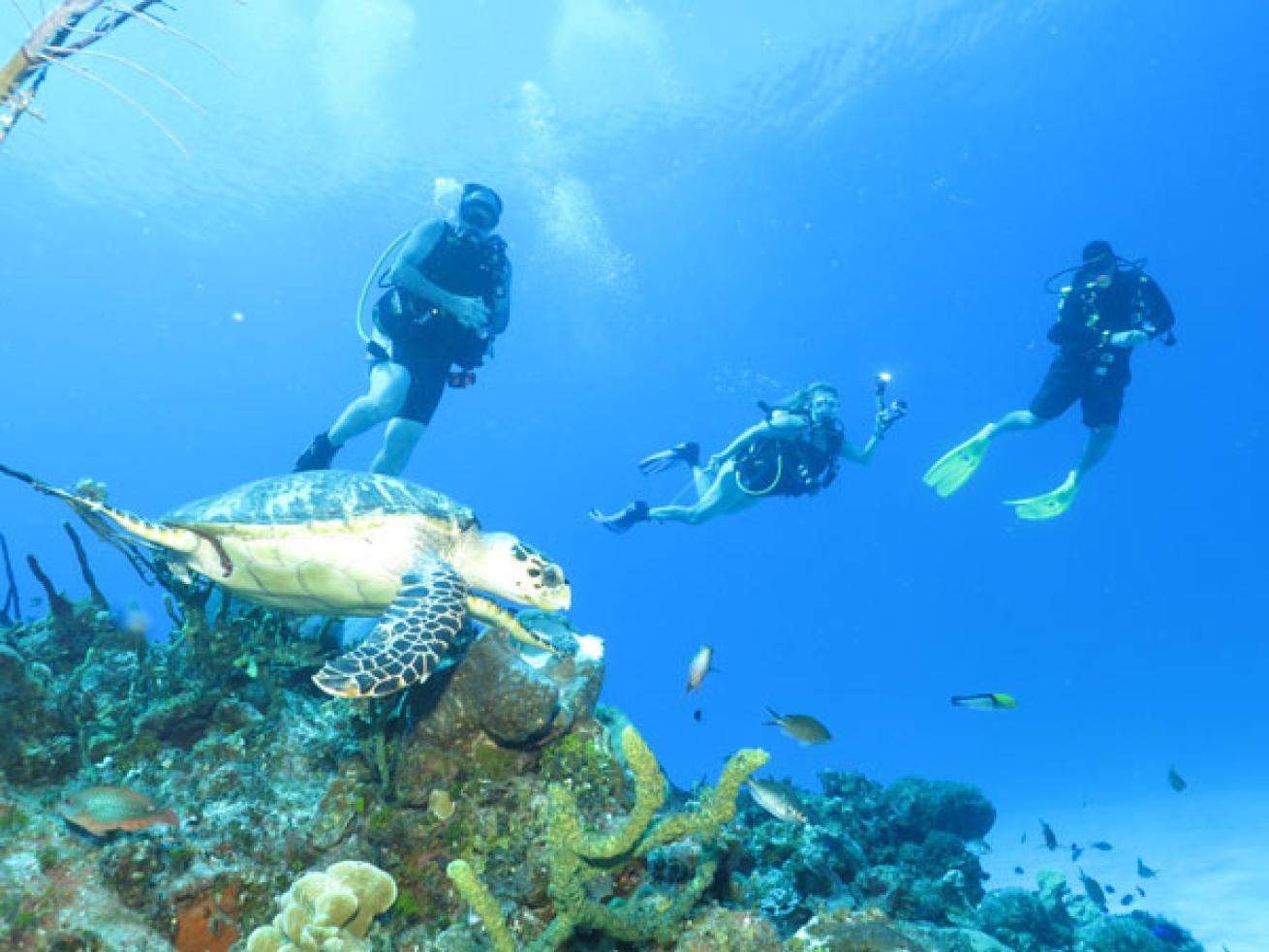
Courtesy Aggressor.comTurtle and divers, Cayman Islands
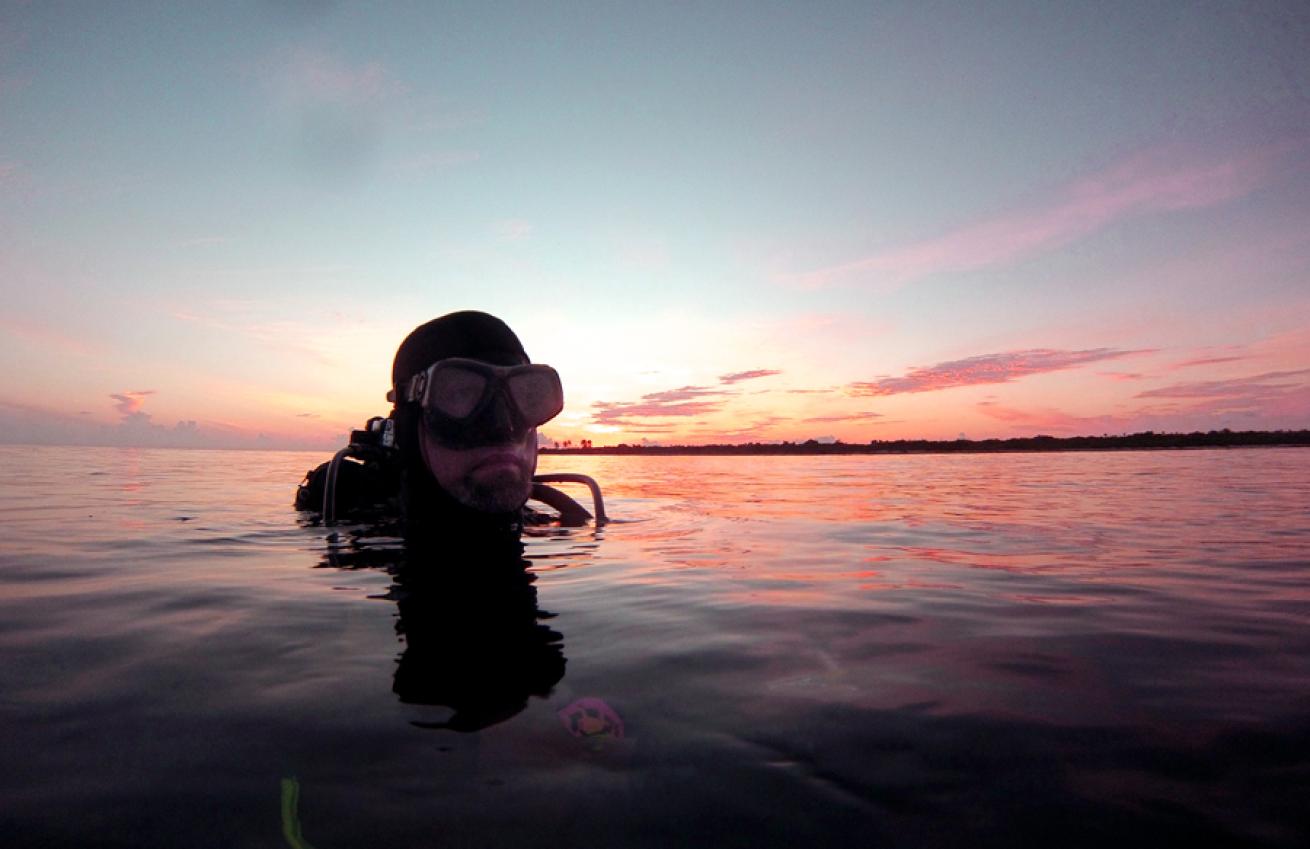
Mary Frances EmmonsDawn dive, Little Cayman
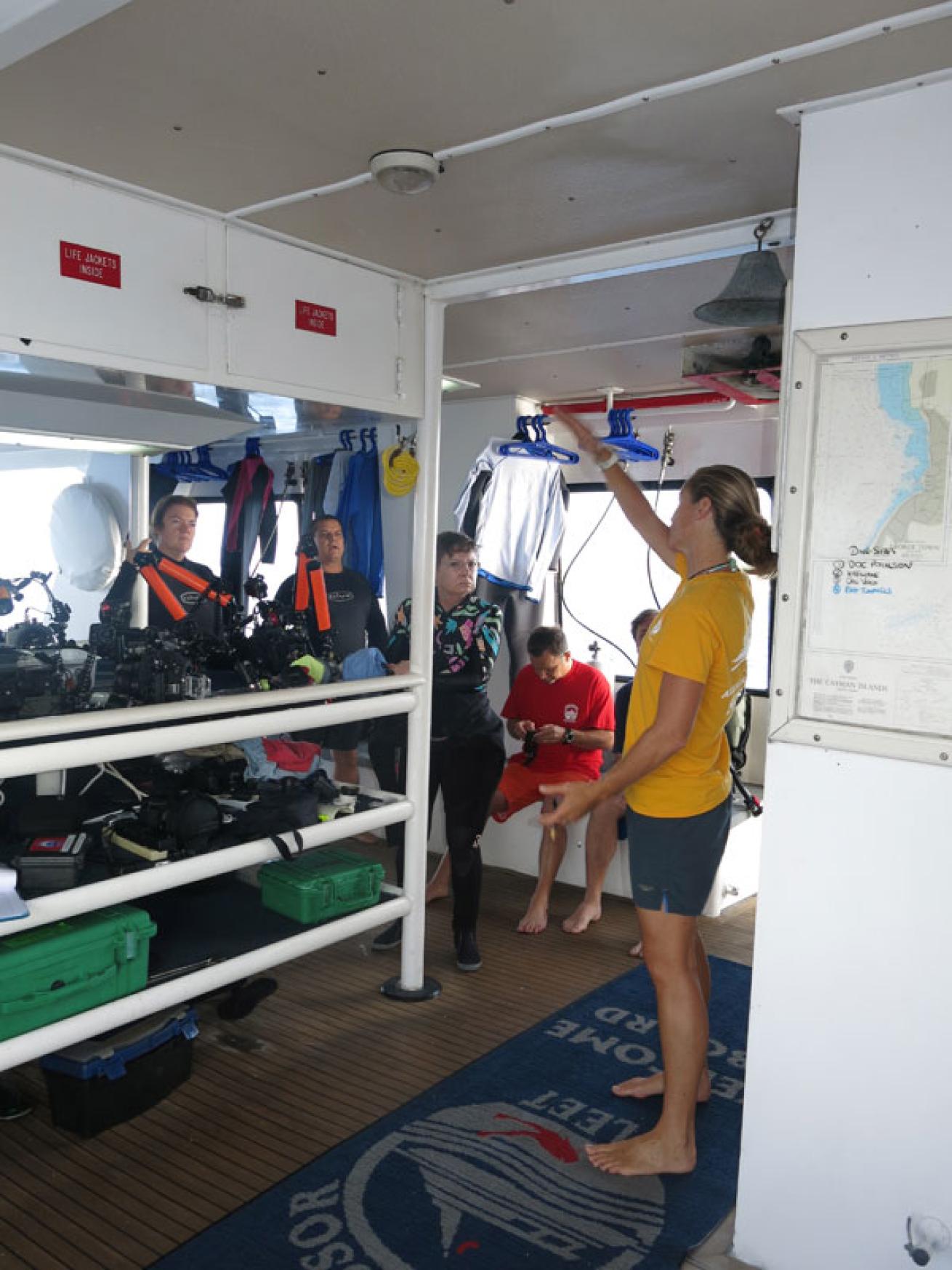
Courtesy Aggressor.comDive briefing, Cayman Aggressor IV
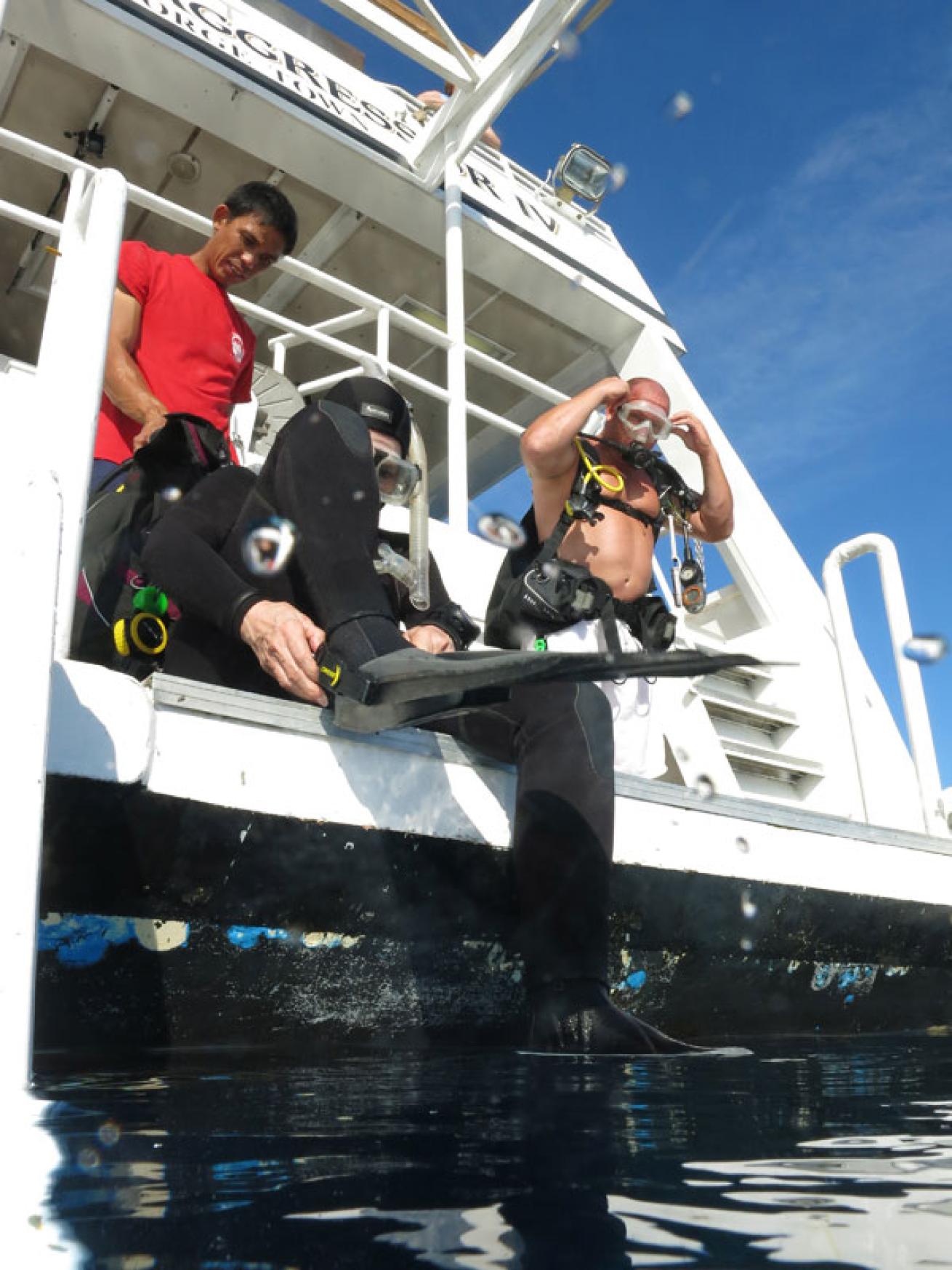
Courtesy Aggressor.comDivers ready to go, Cayman Aggressor IV
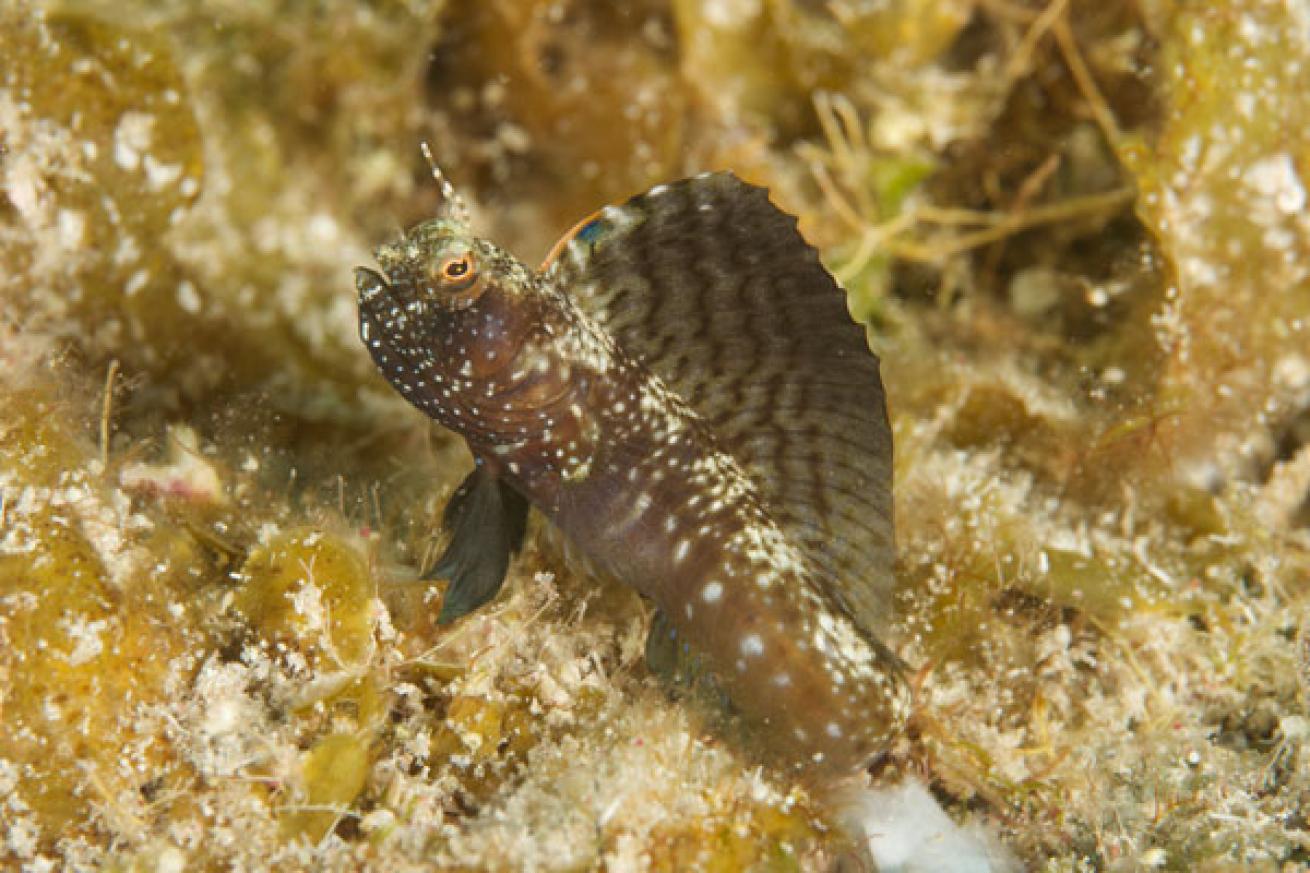
Courtesy Wayne B. Brown/Aggressor.comSailfin blenny, Little Cayman
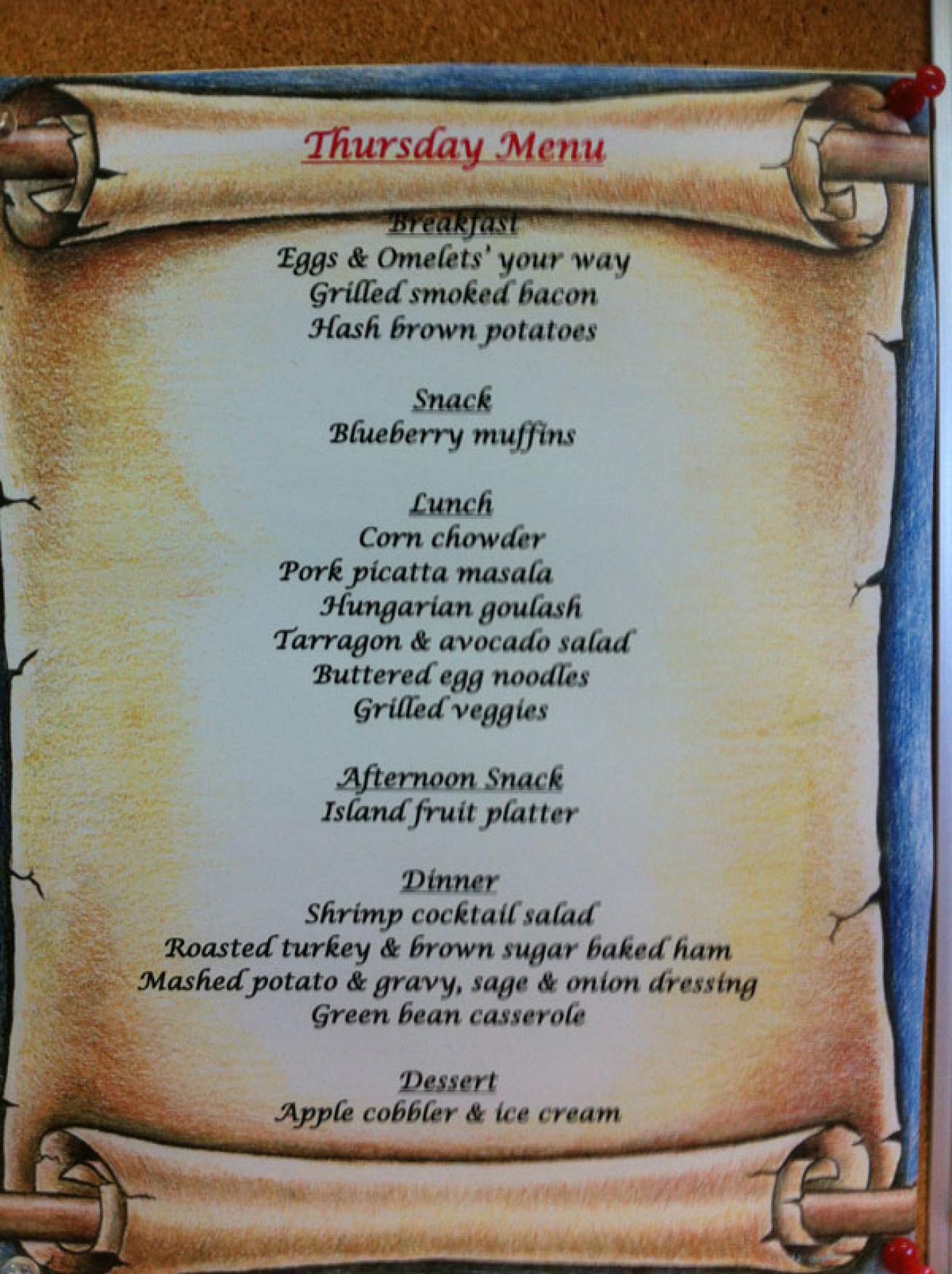
Mary Frances EmmonsThanksgiving every Thursday
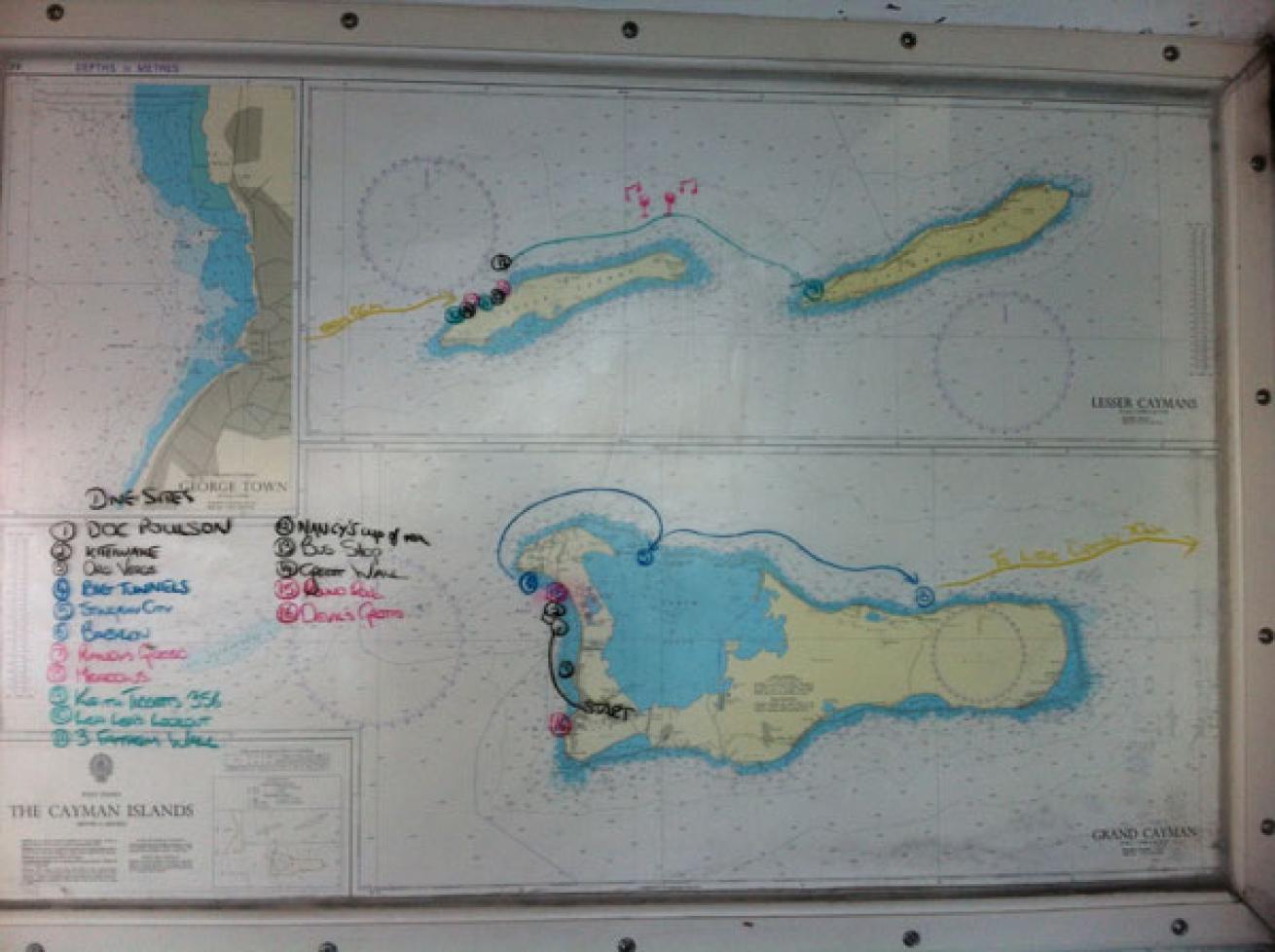
Mary Frances Emmons16 dive sites, 25 dives
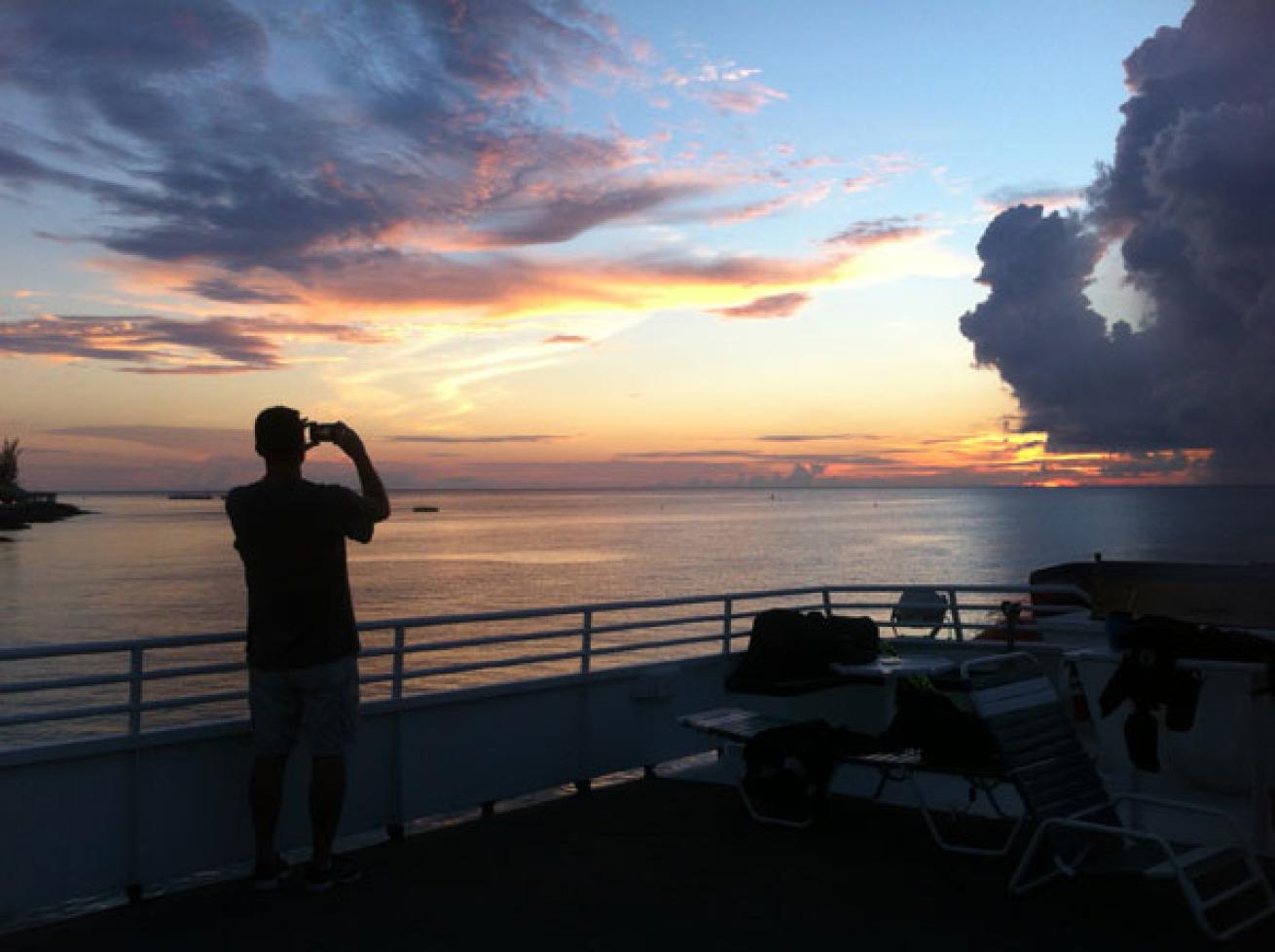
Mary Frances EmmonsSunset, George Town harbor, Grand Cayman
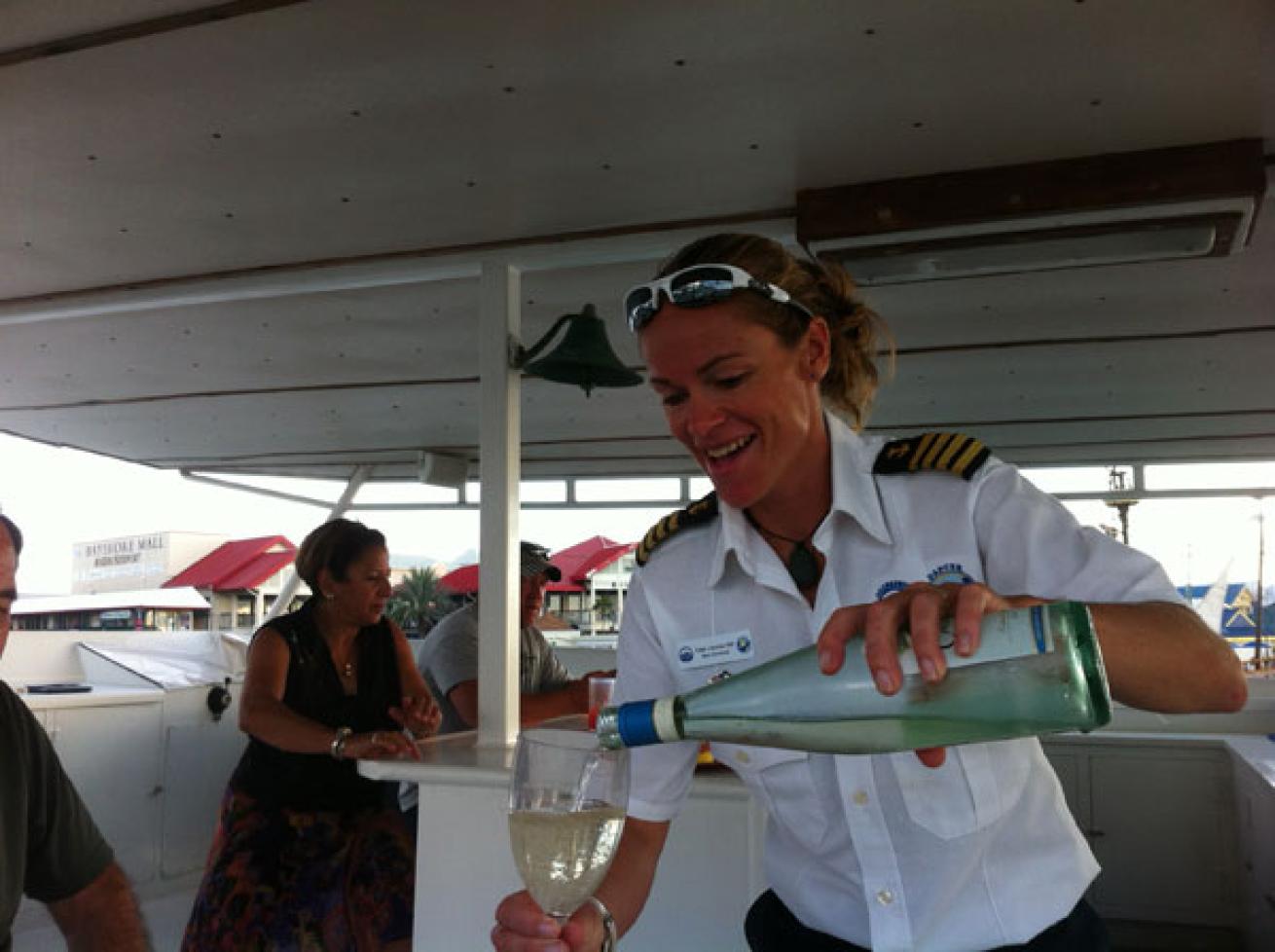
Mary Frances EmmonsNow it's time to say good-bye ...

